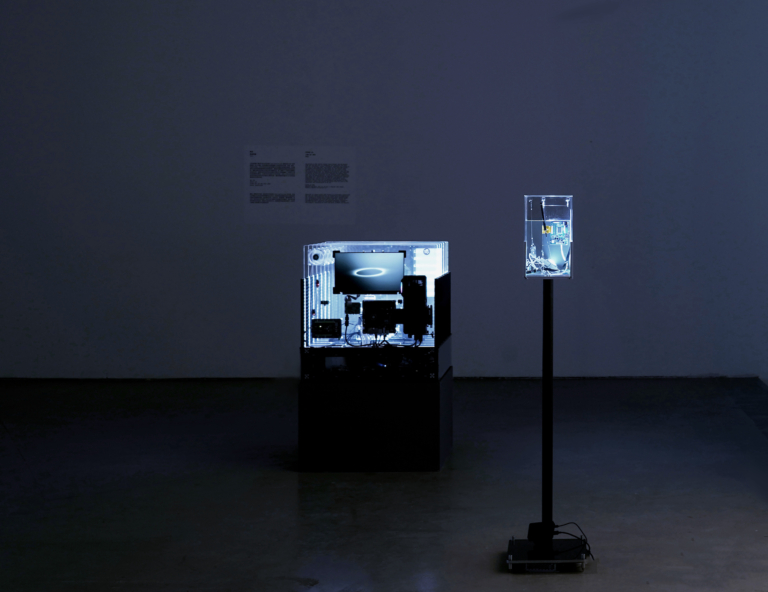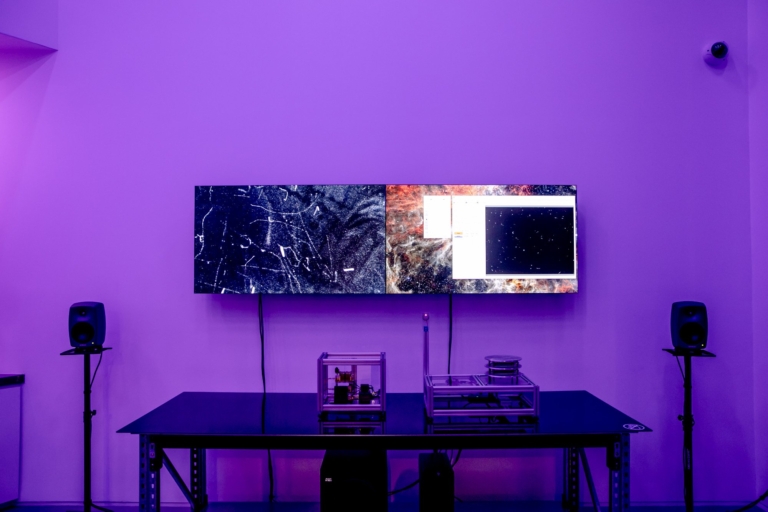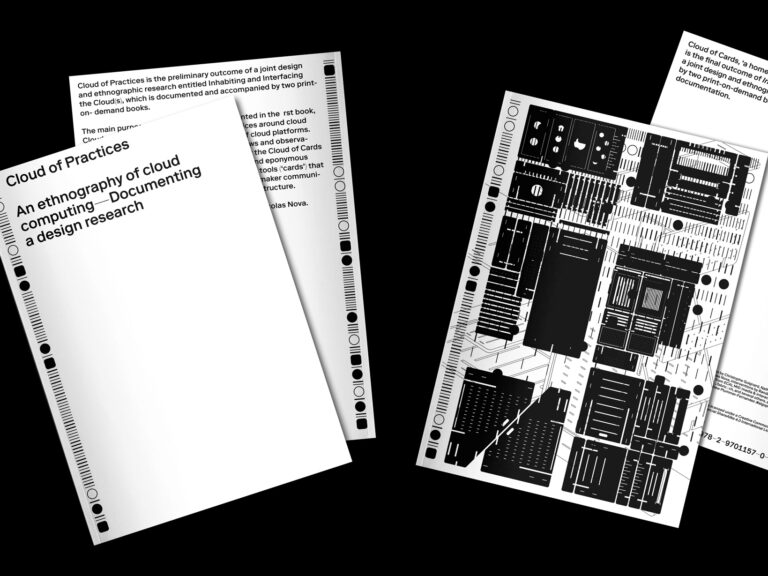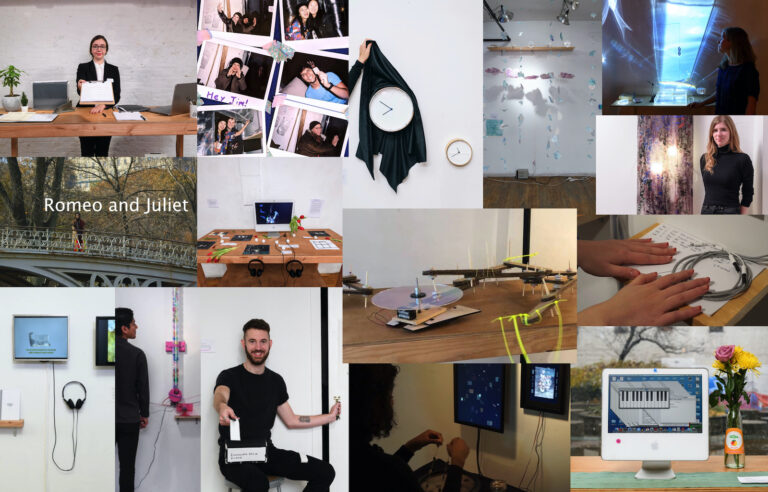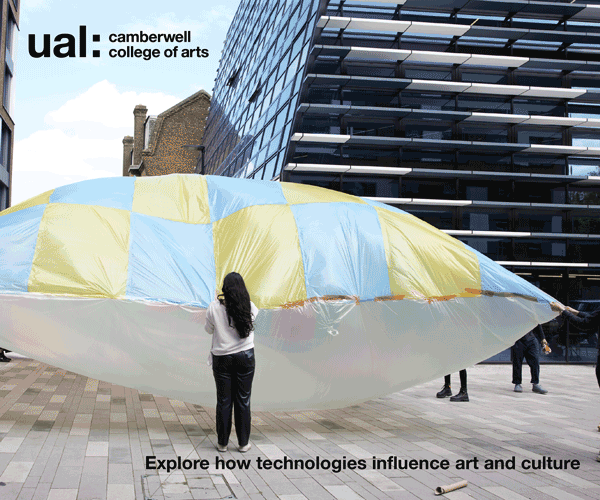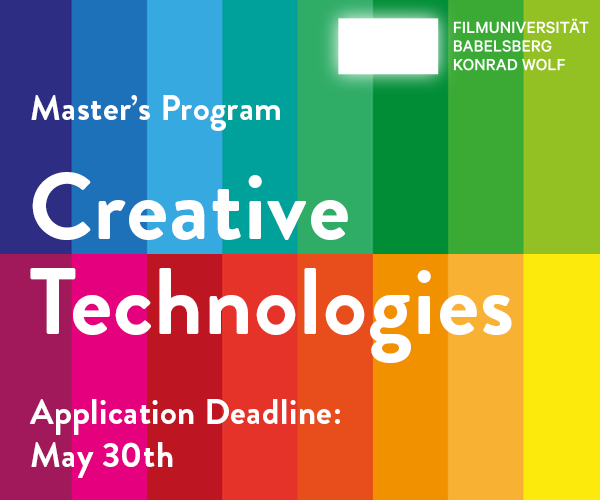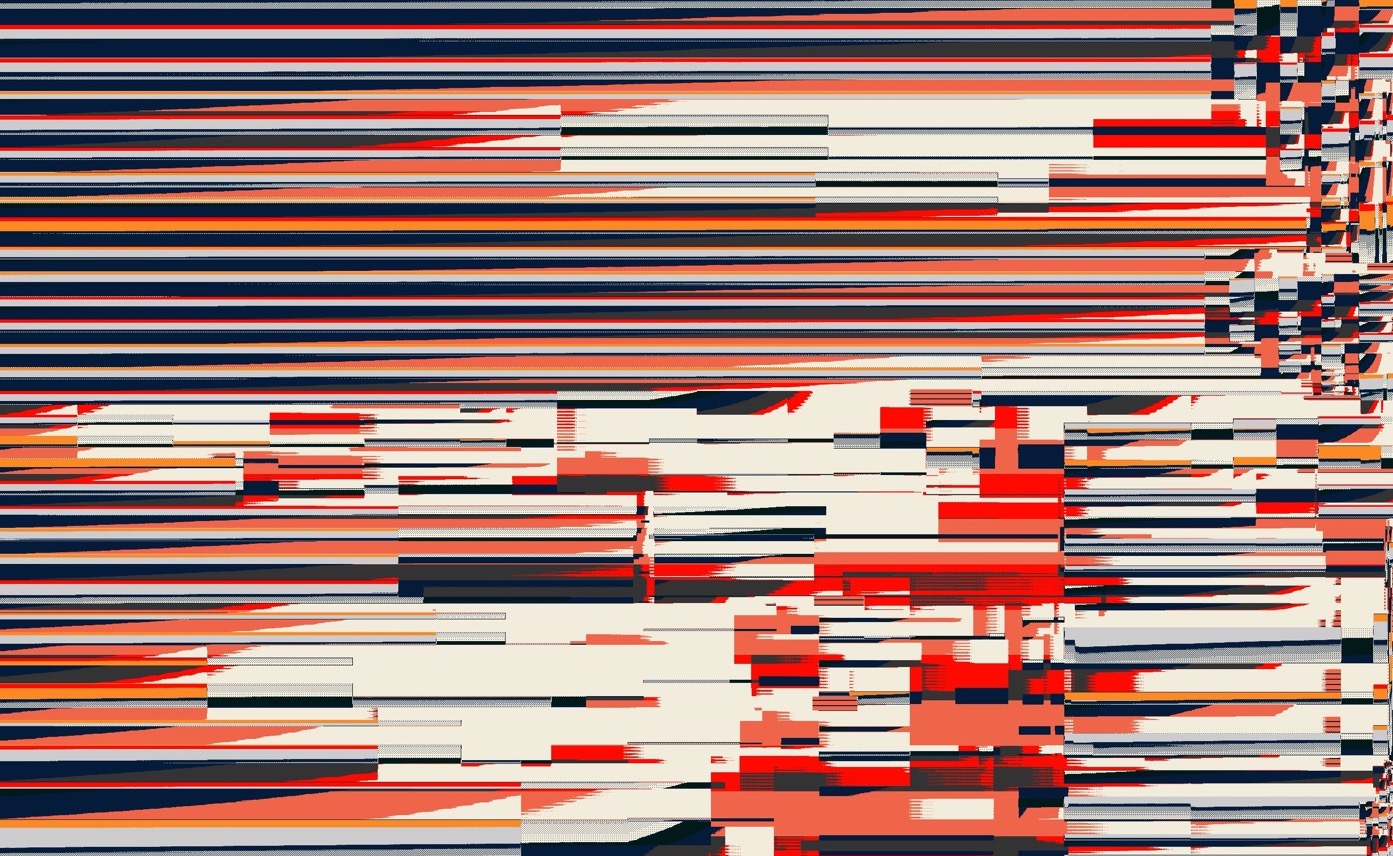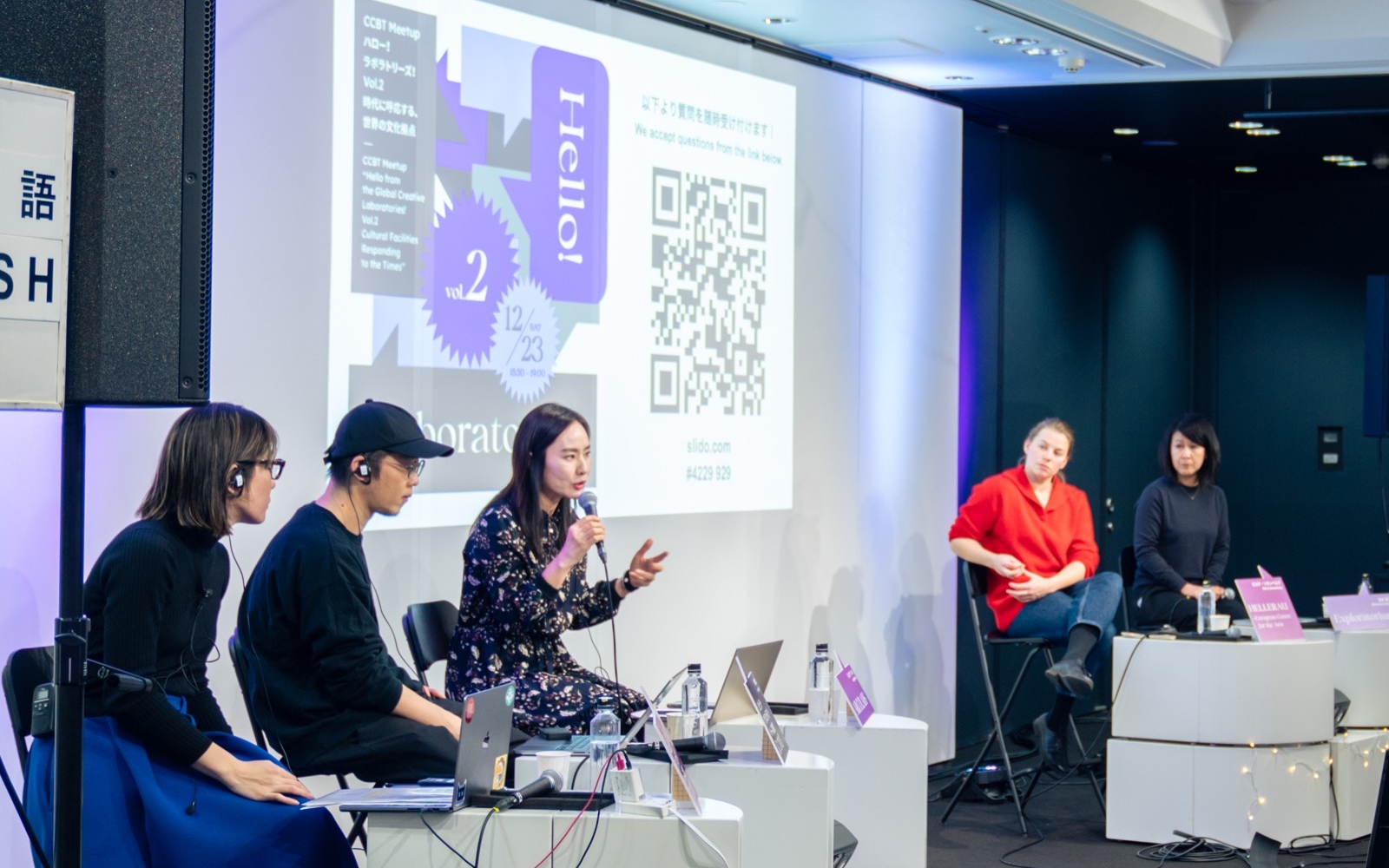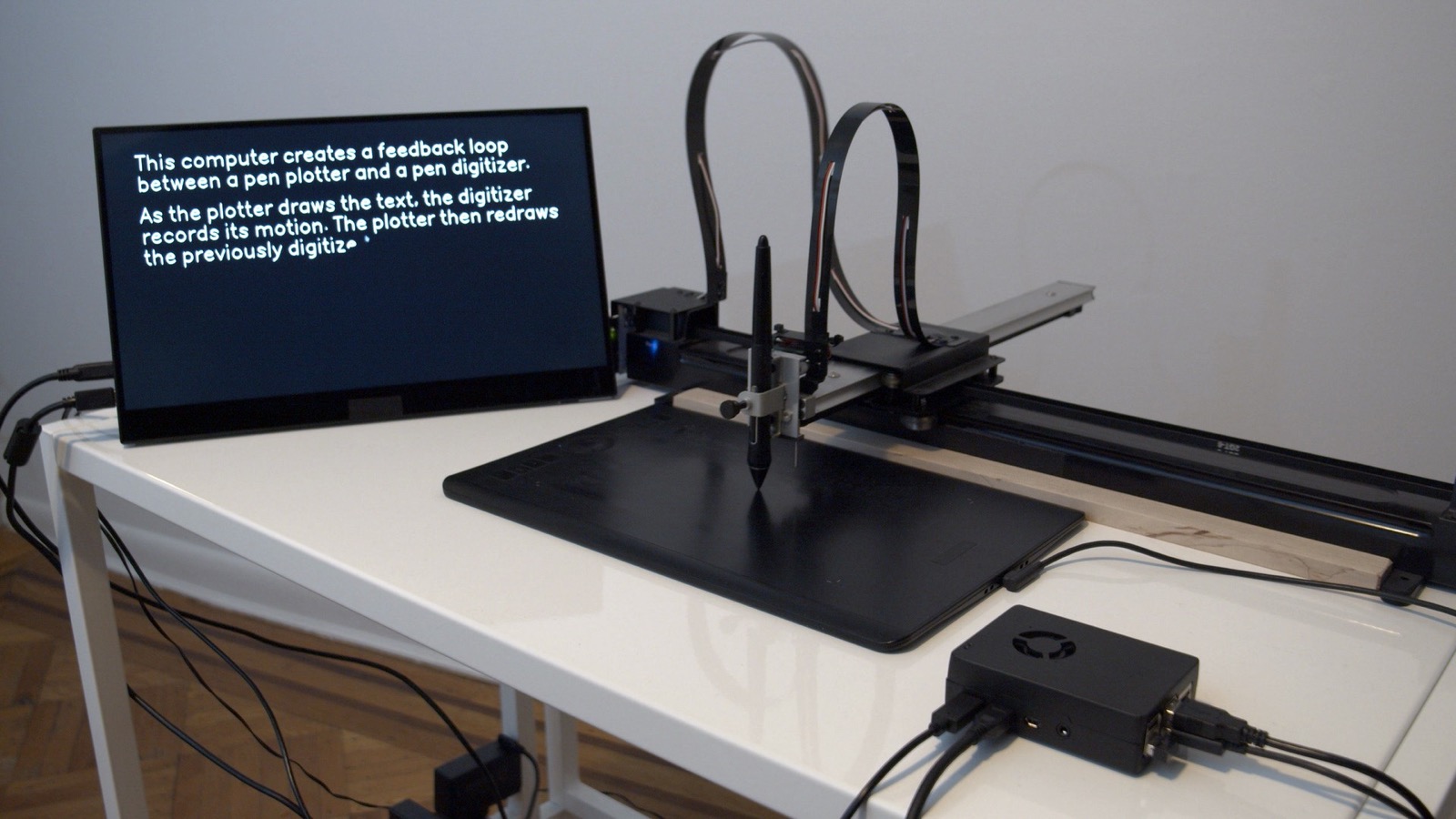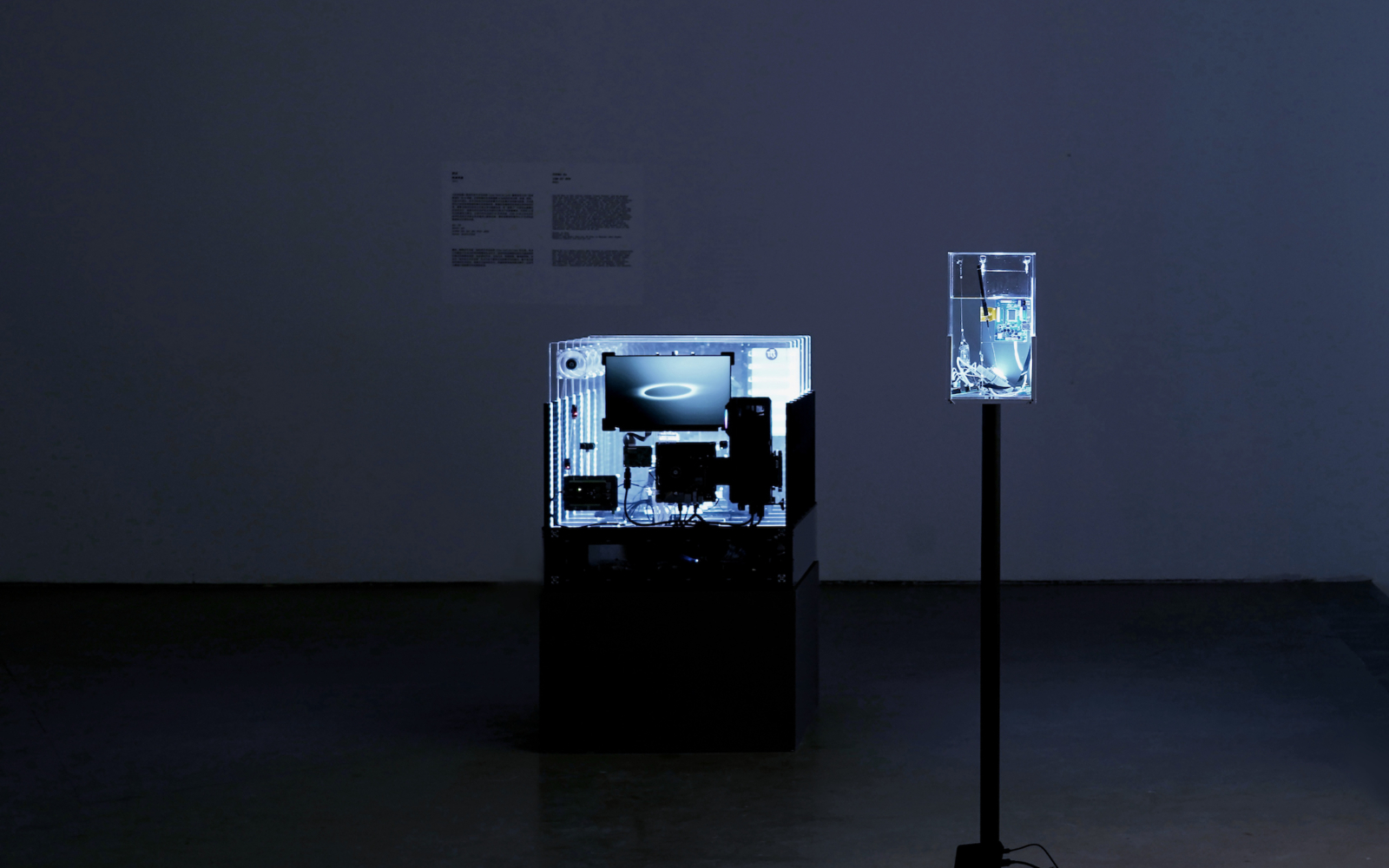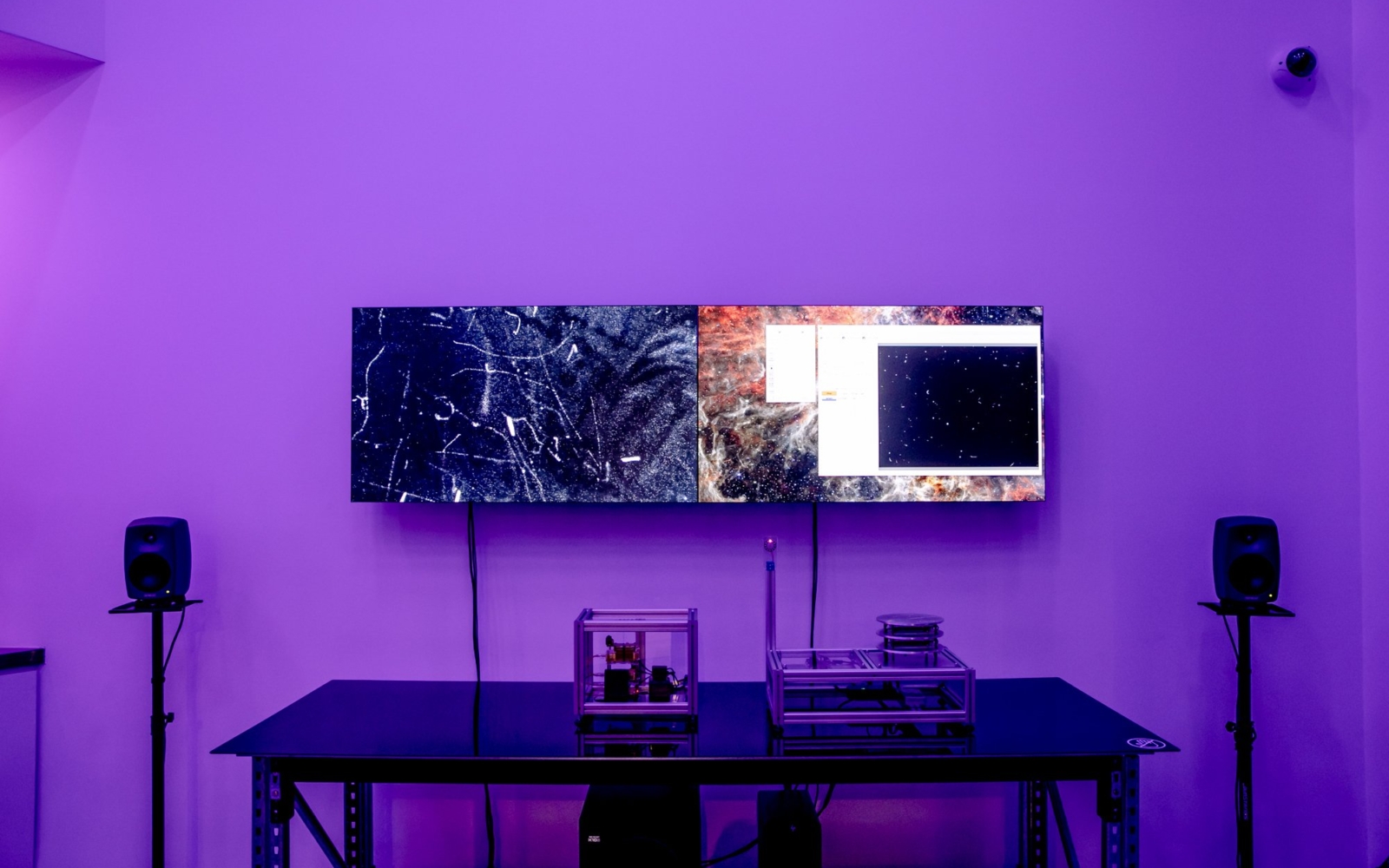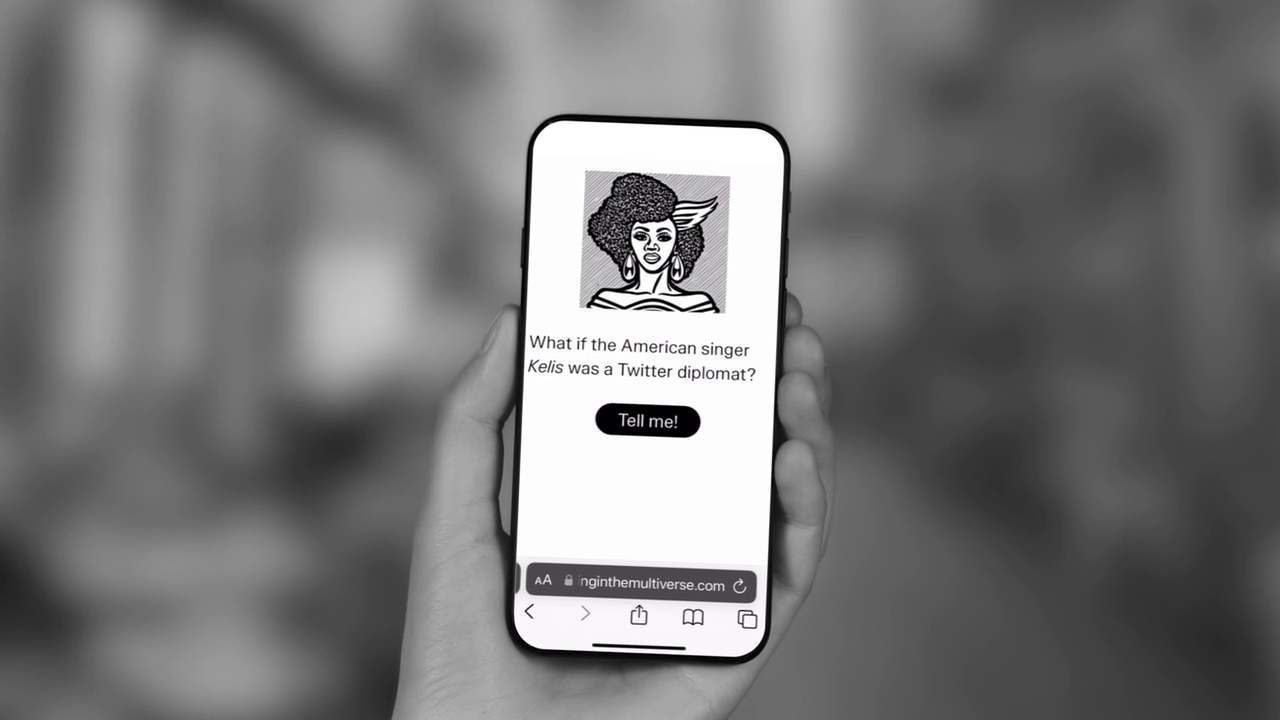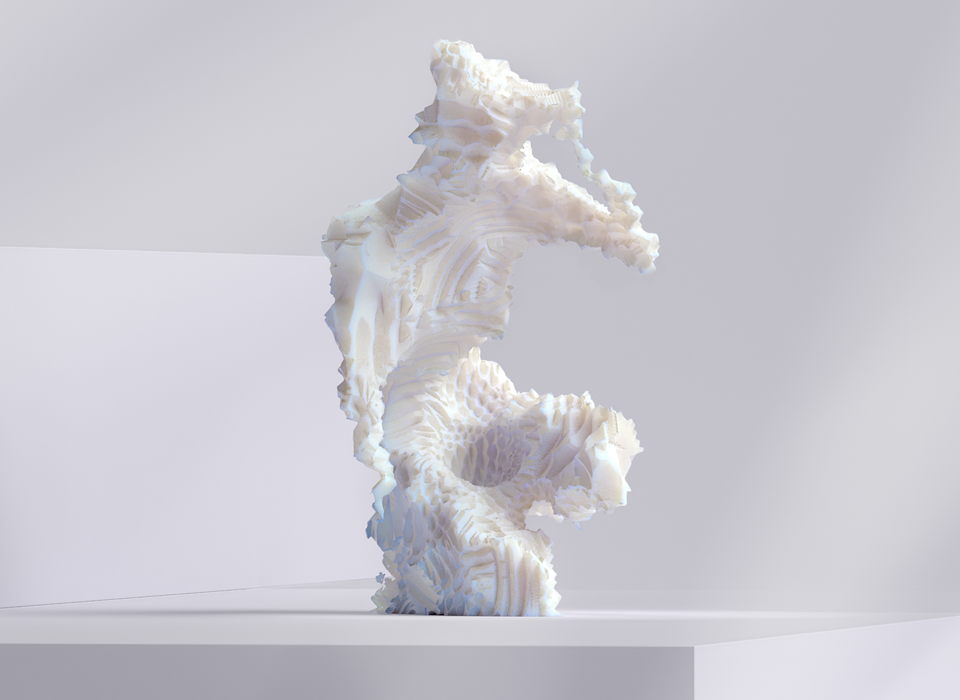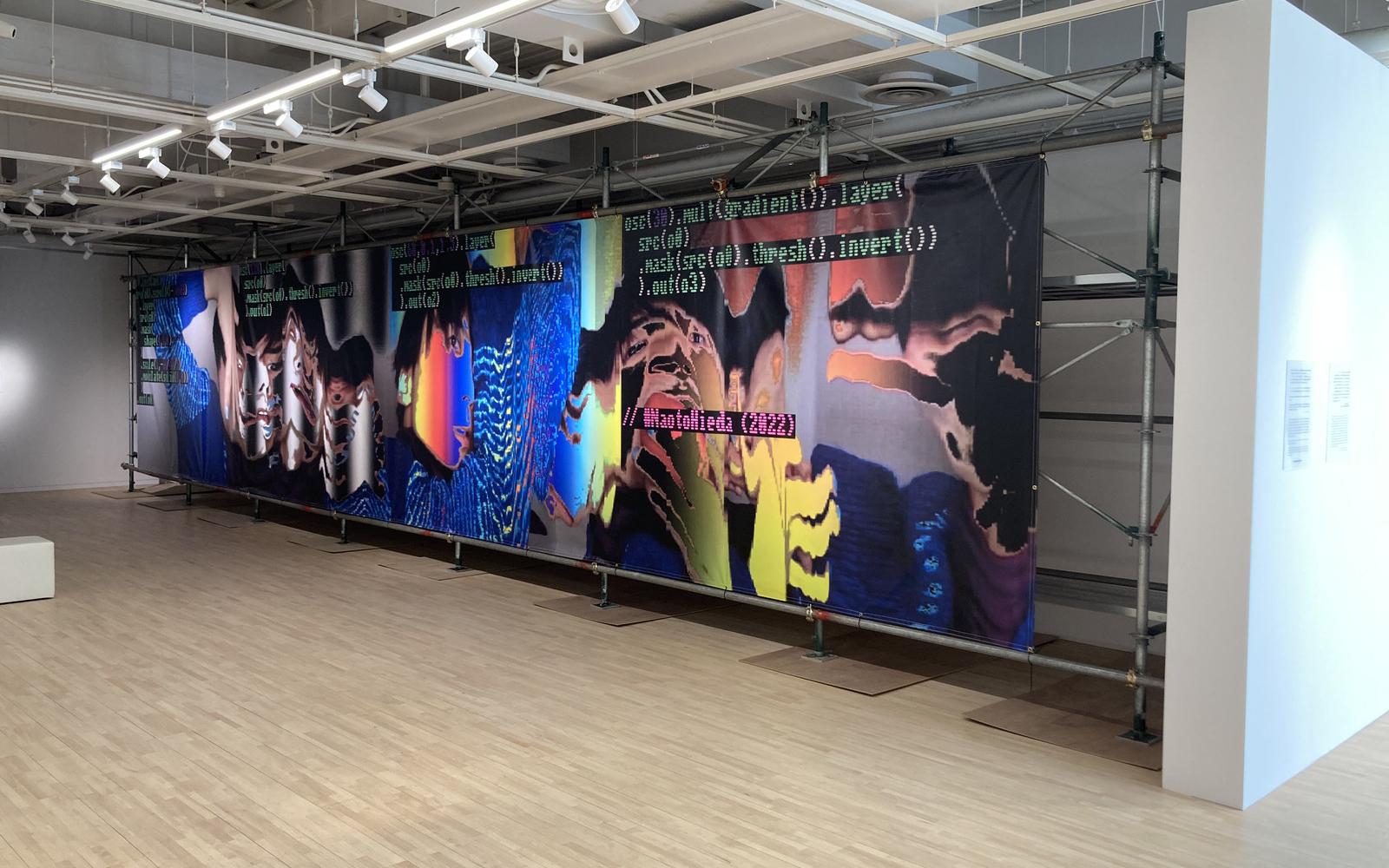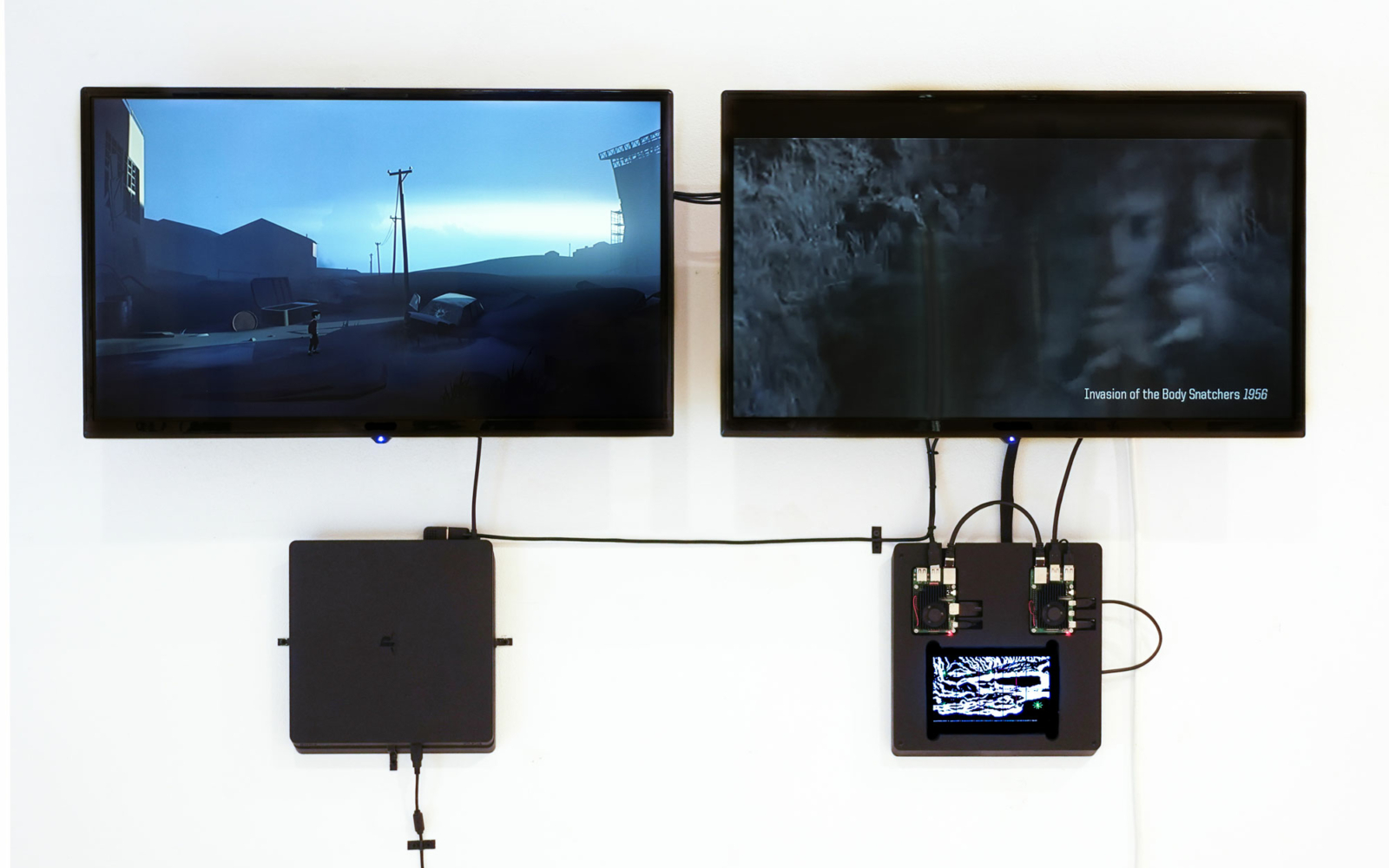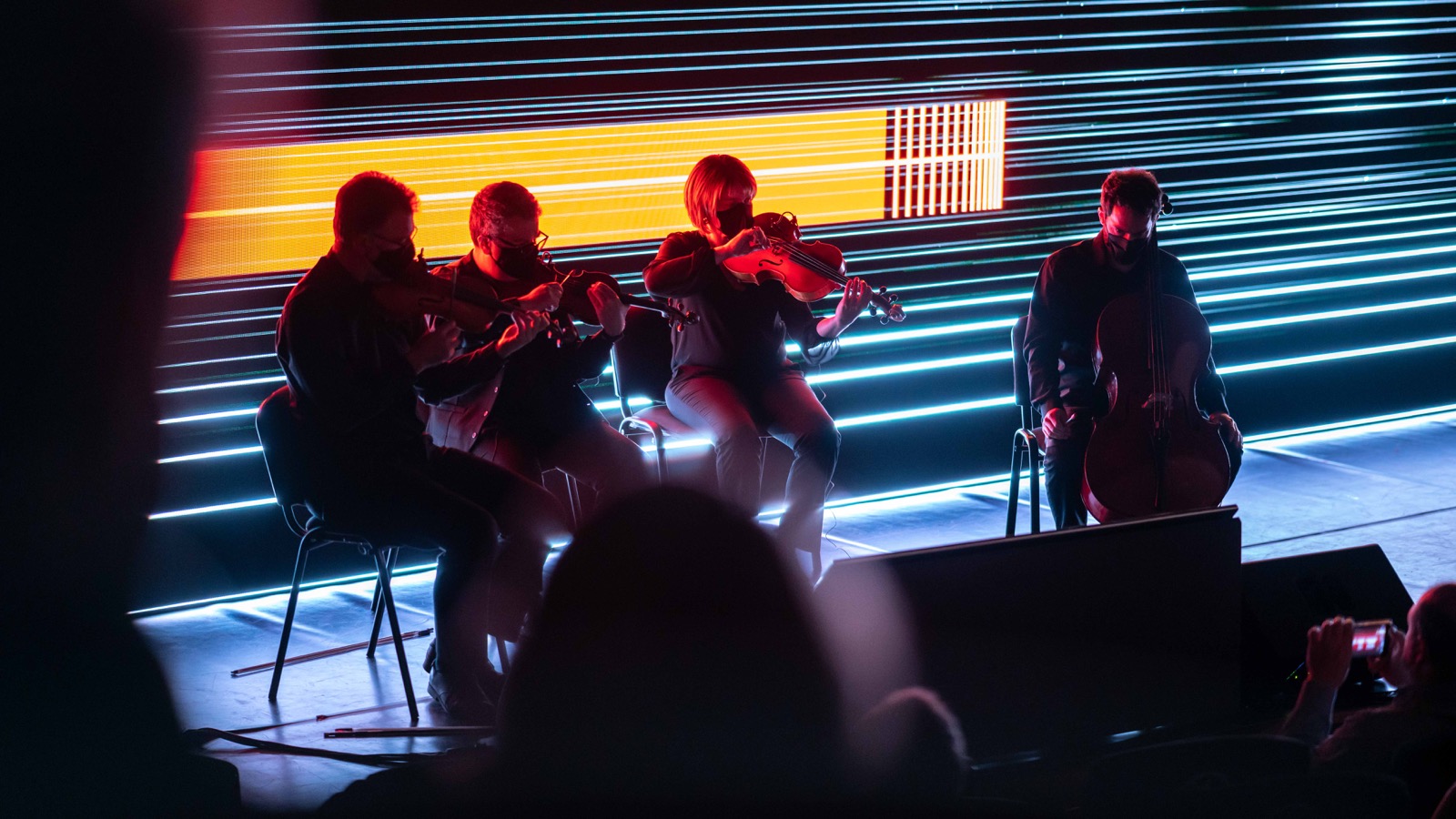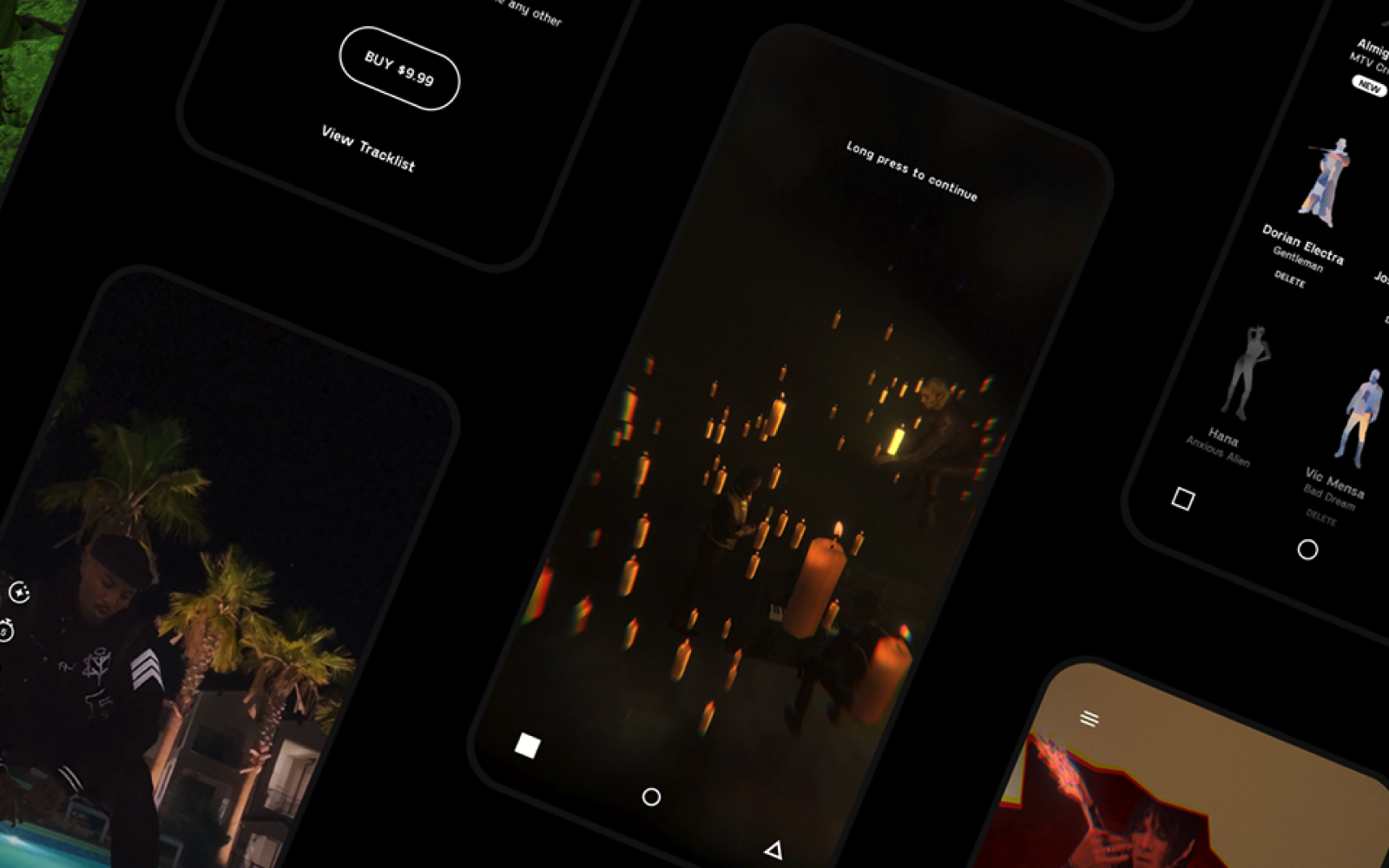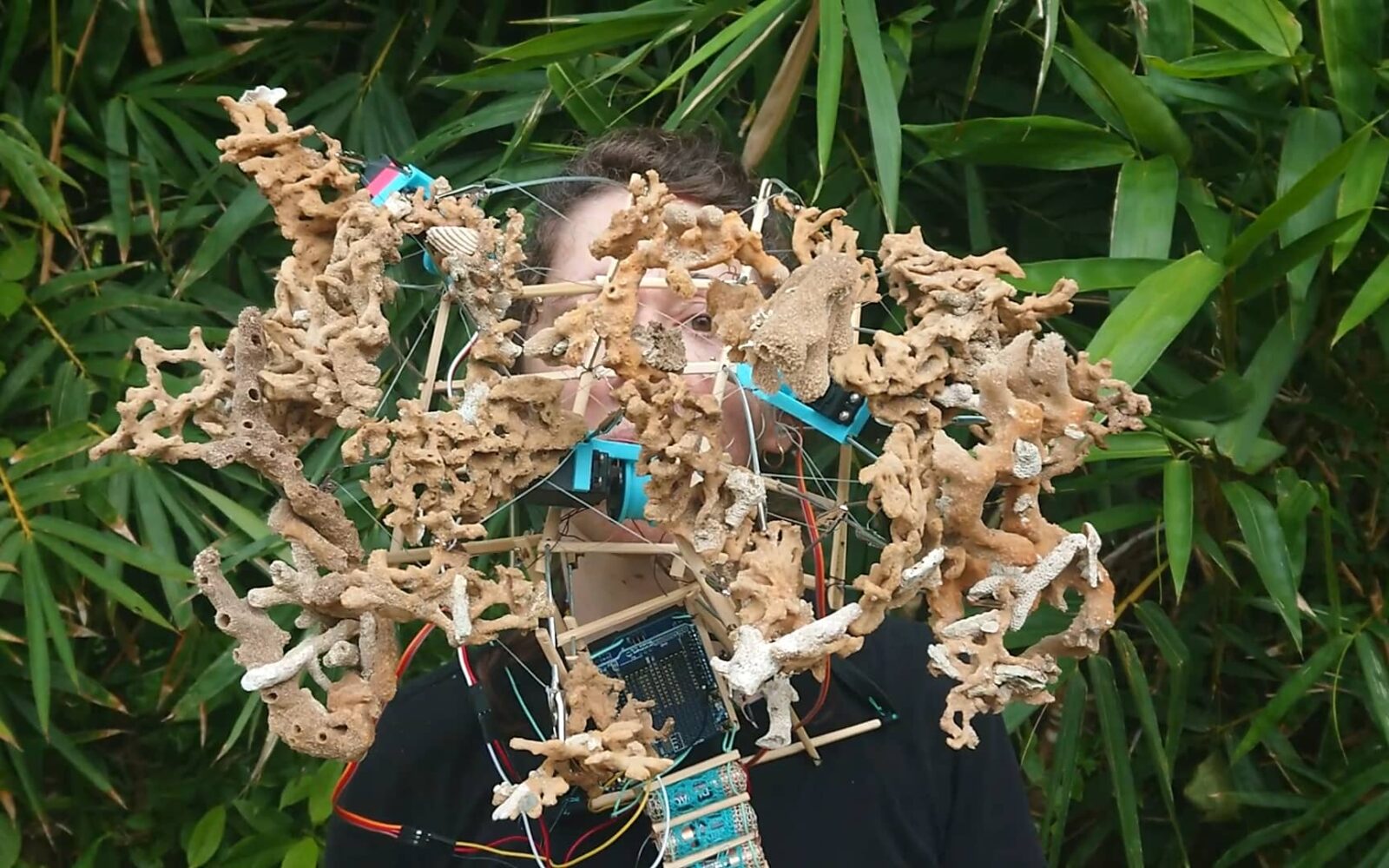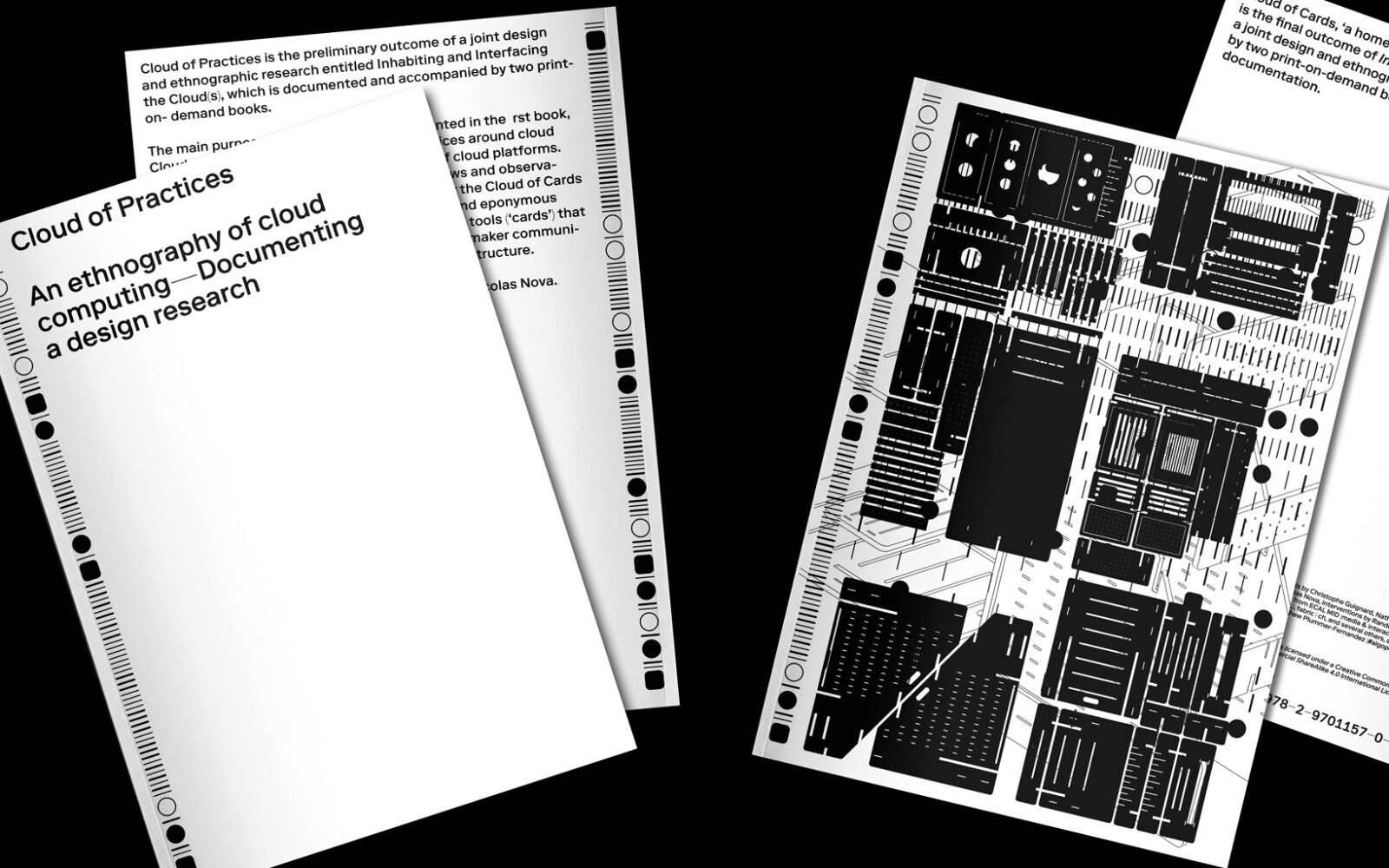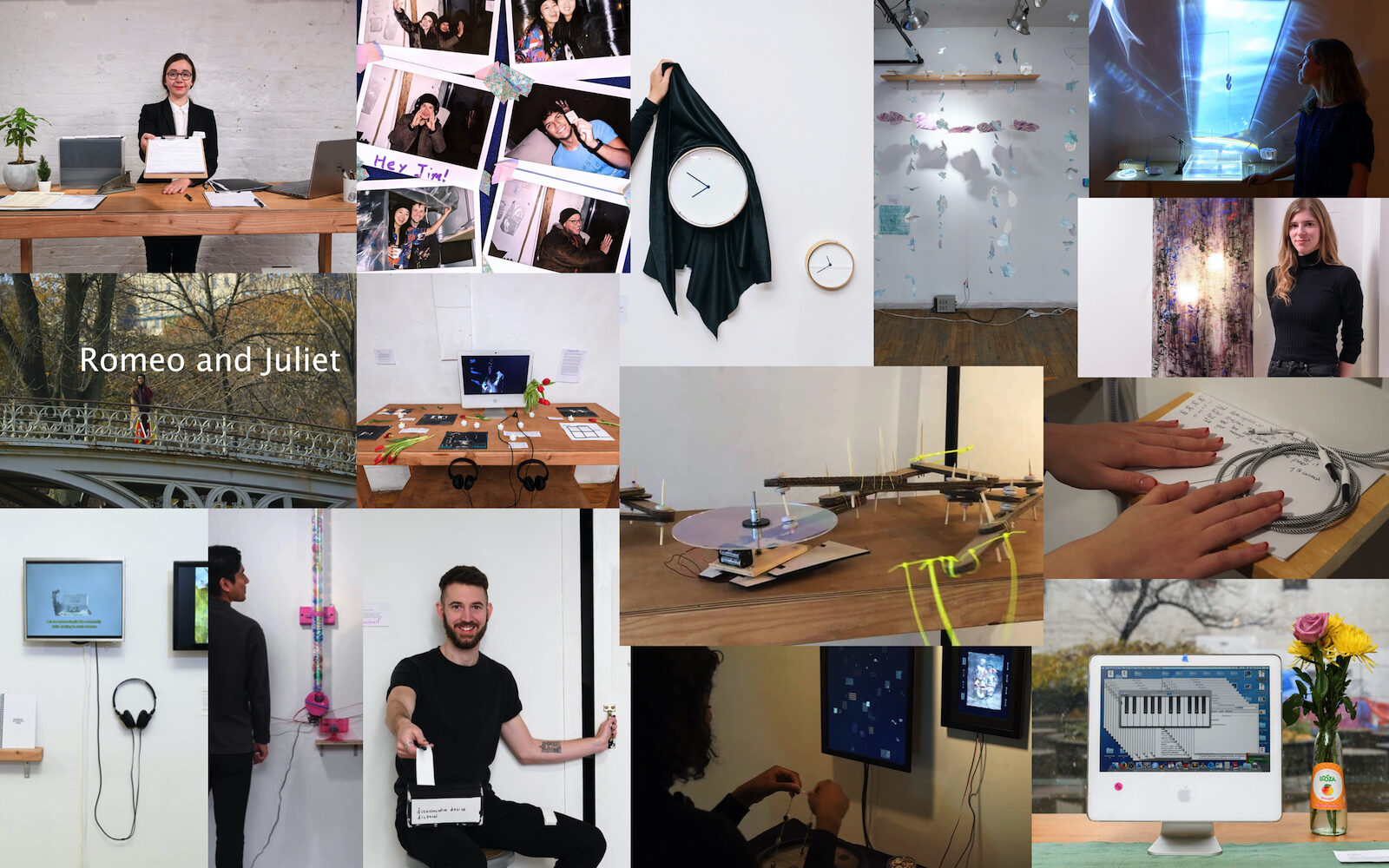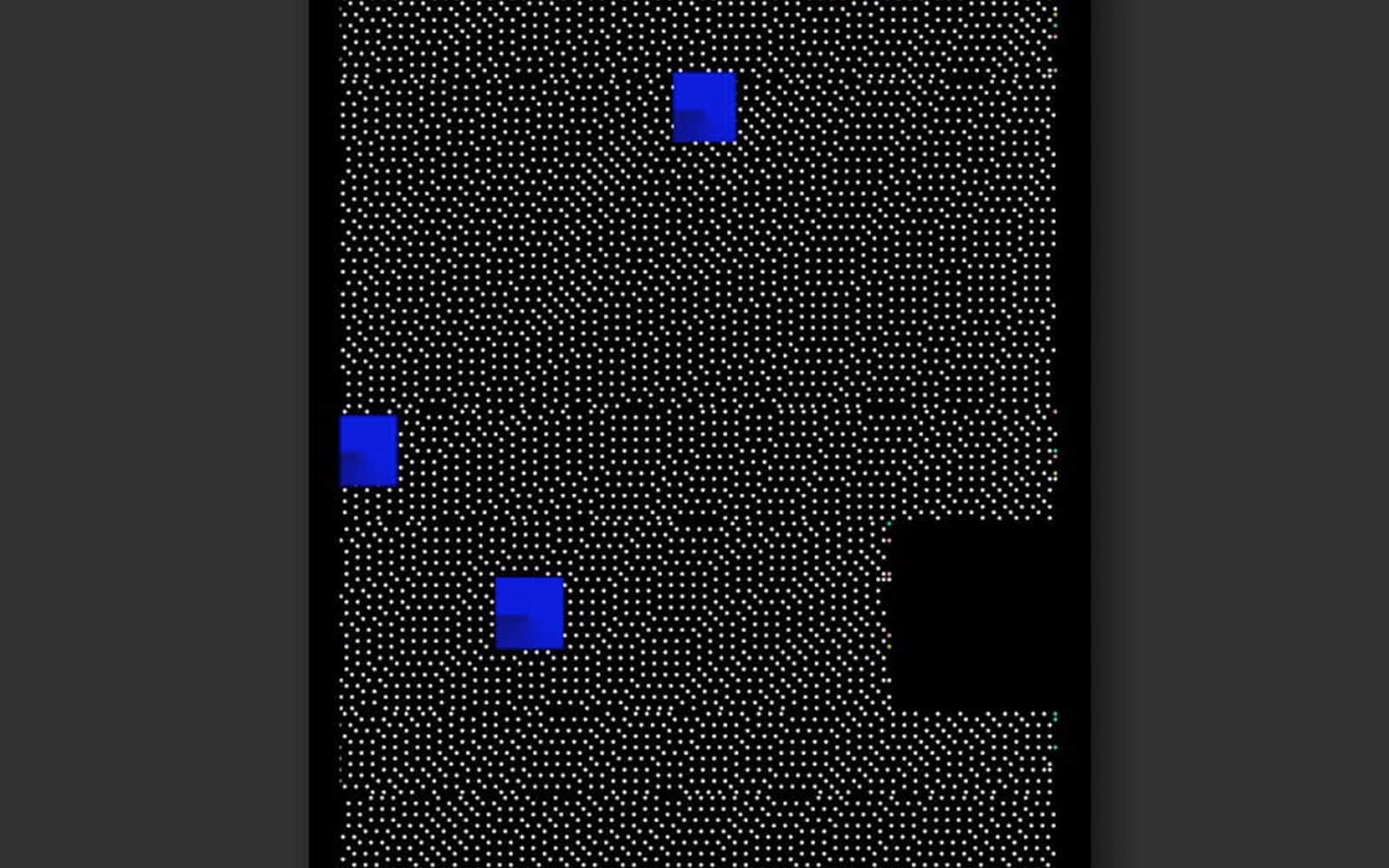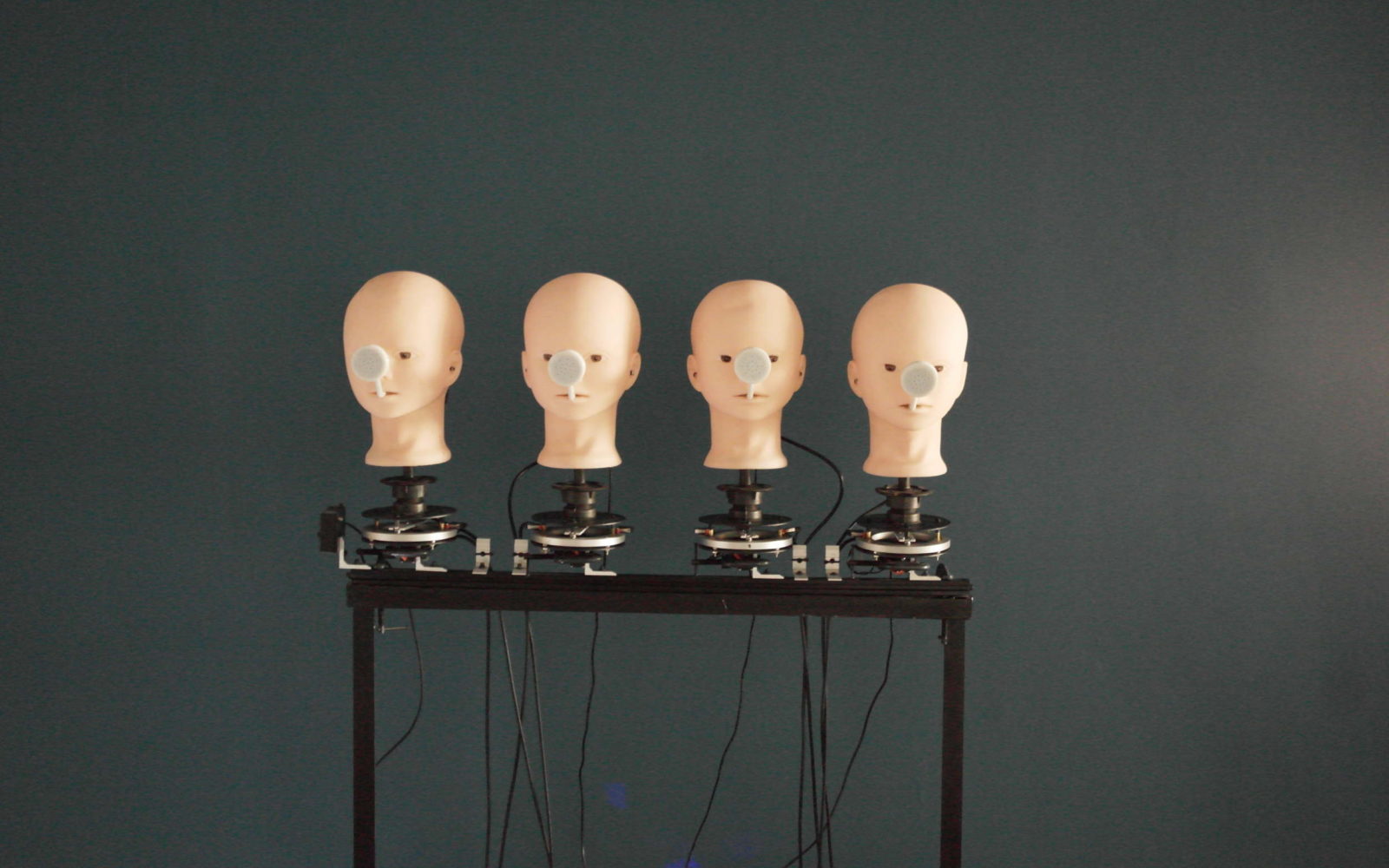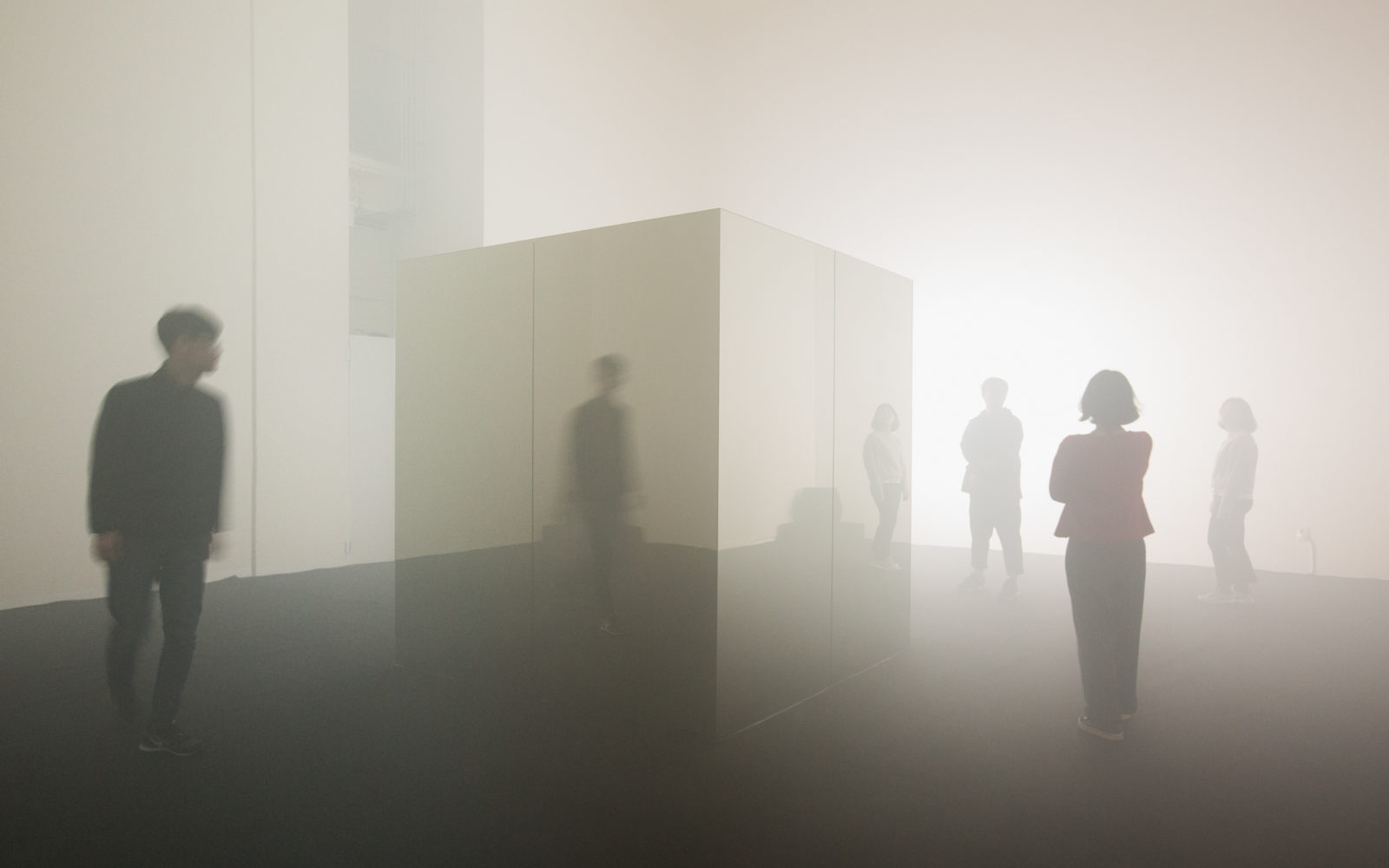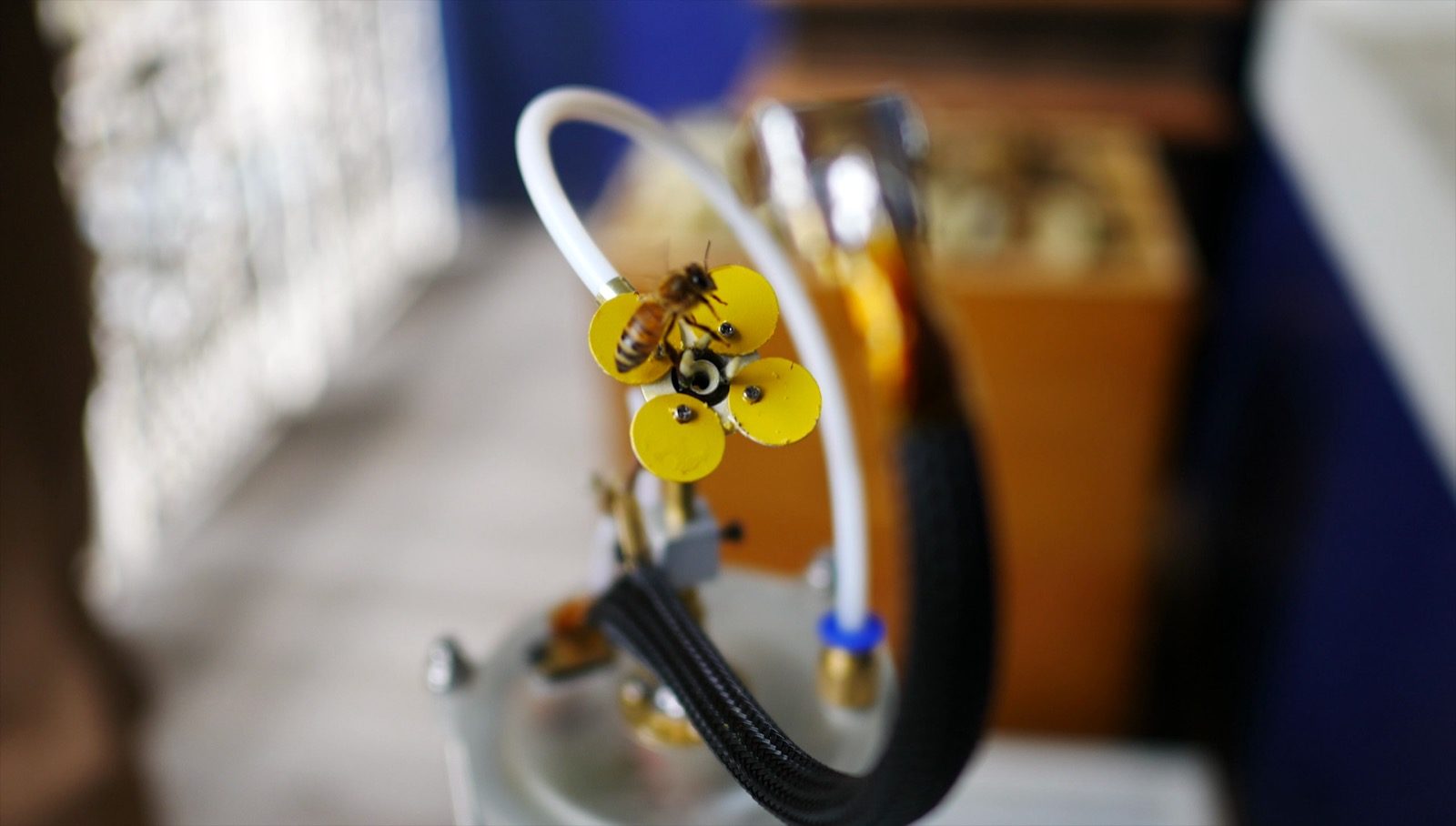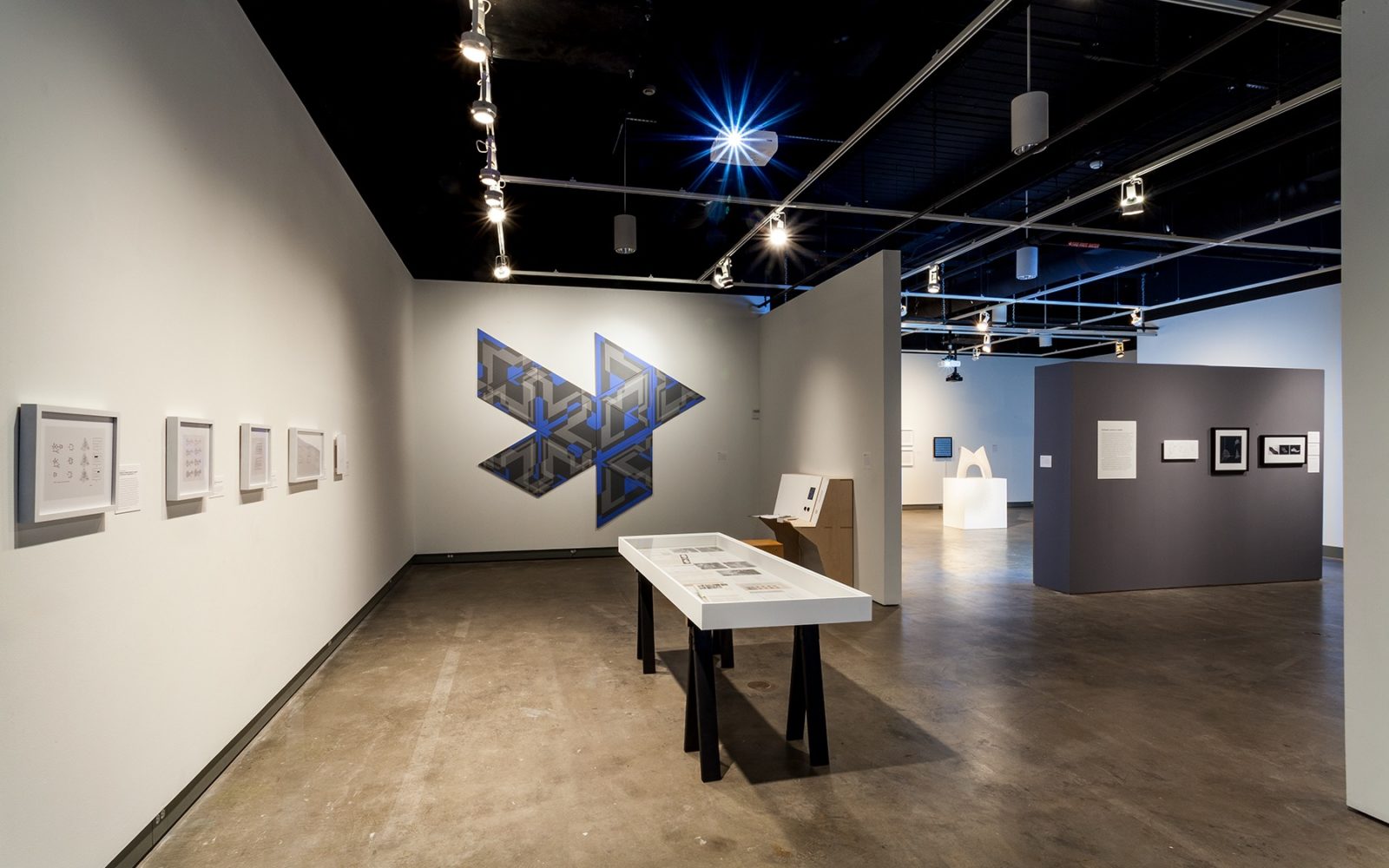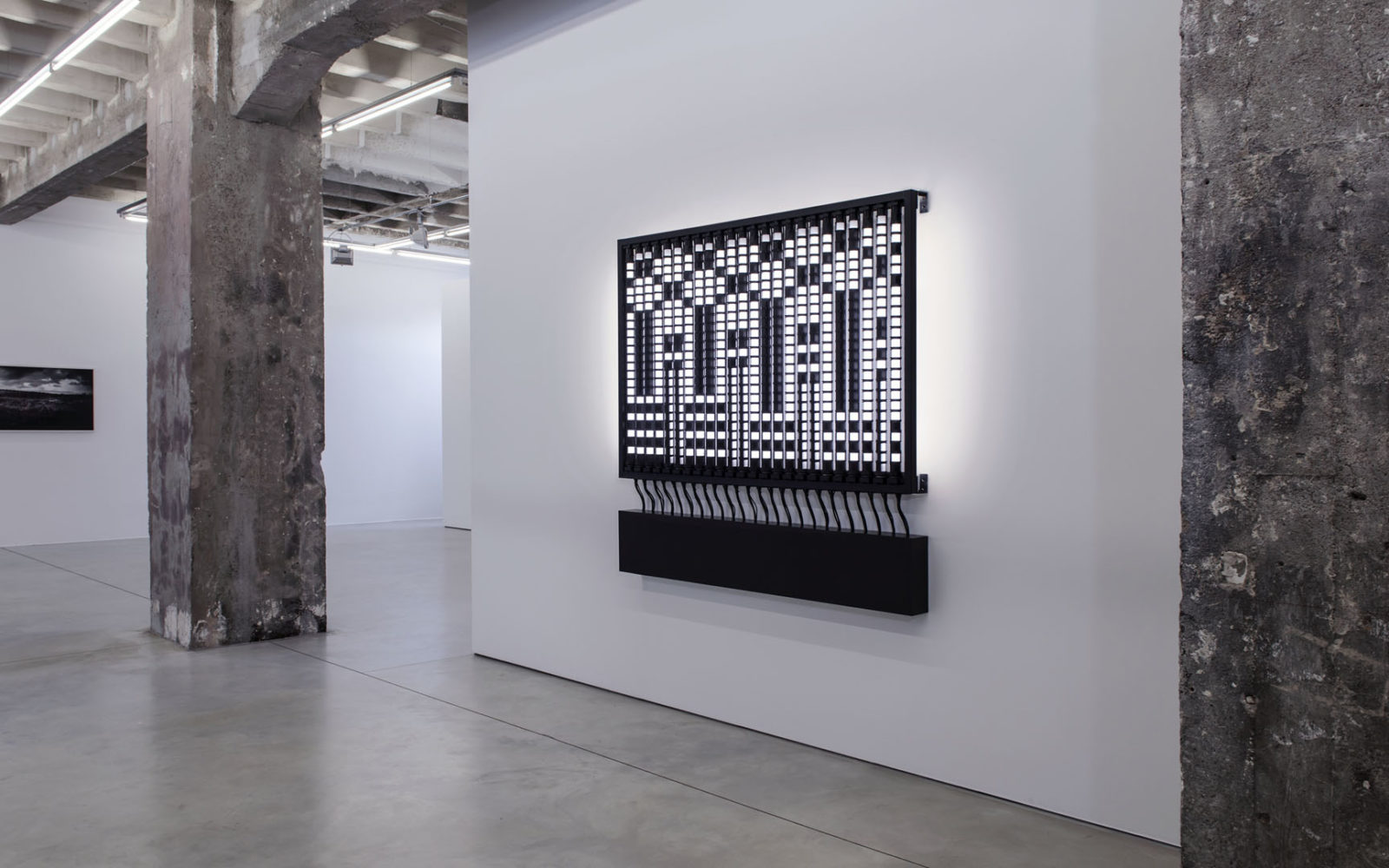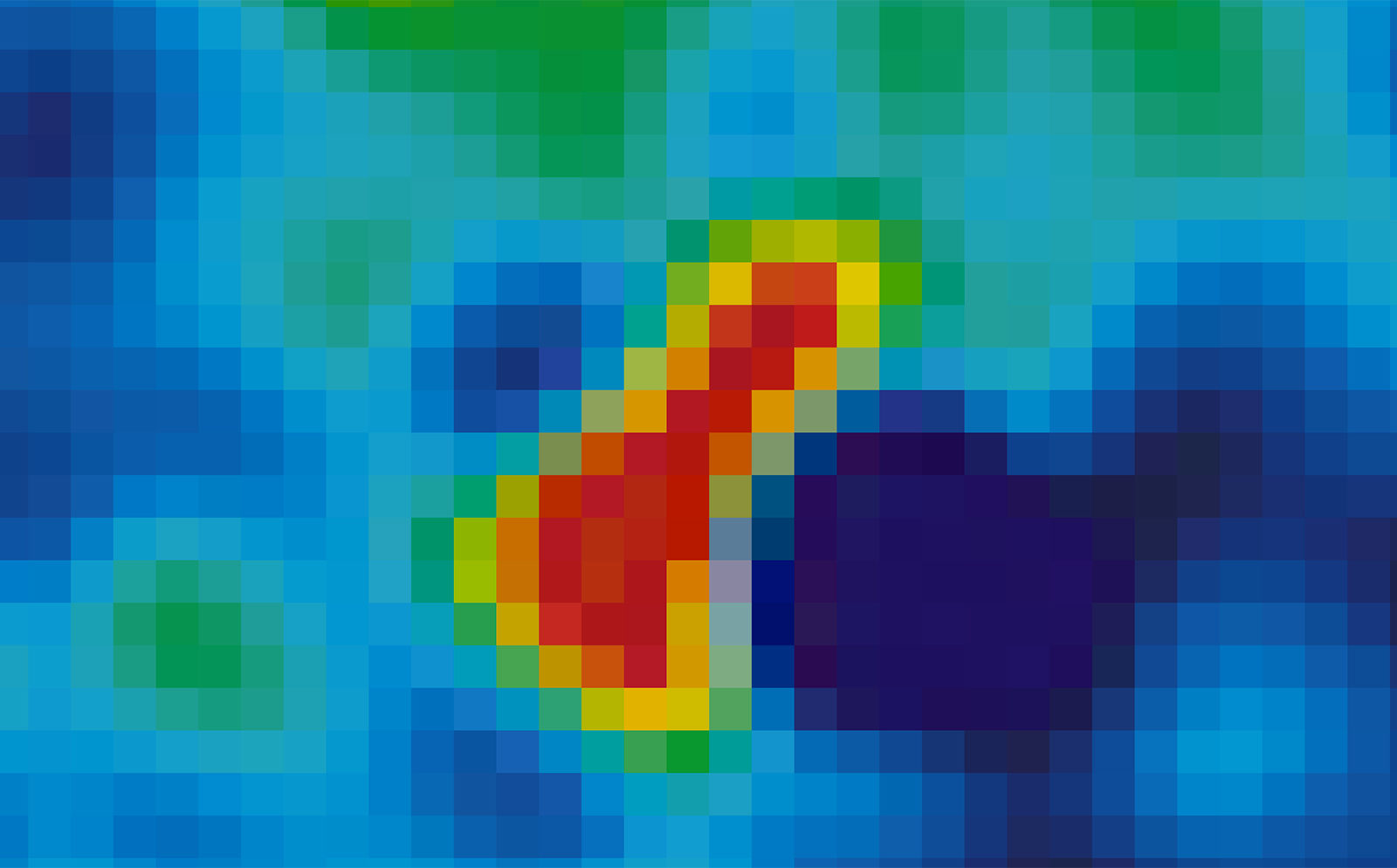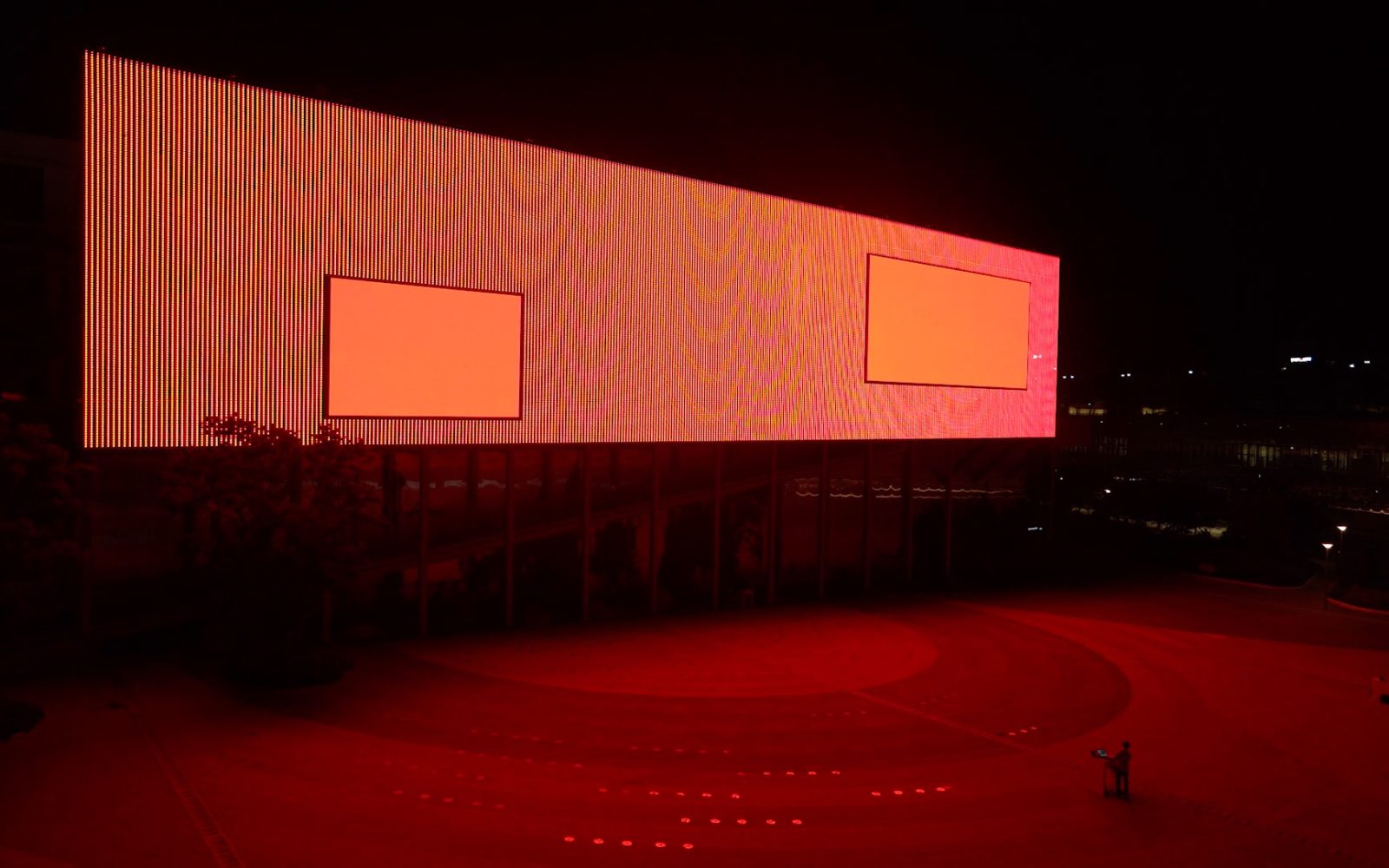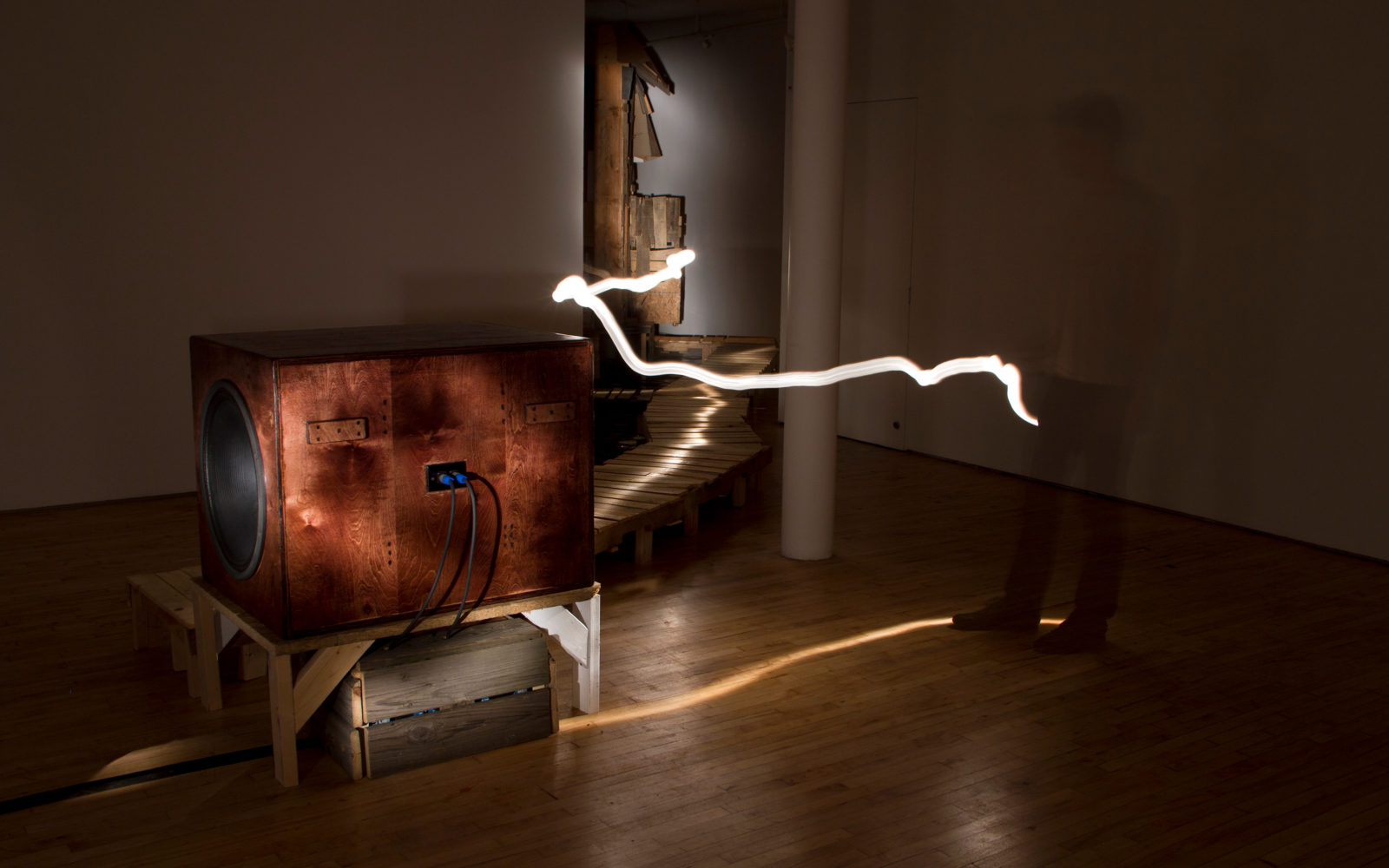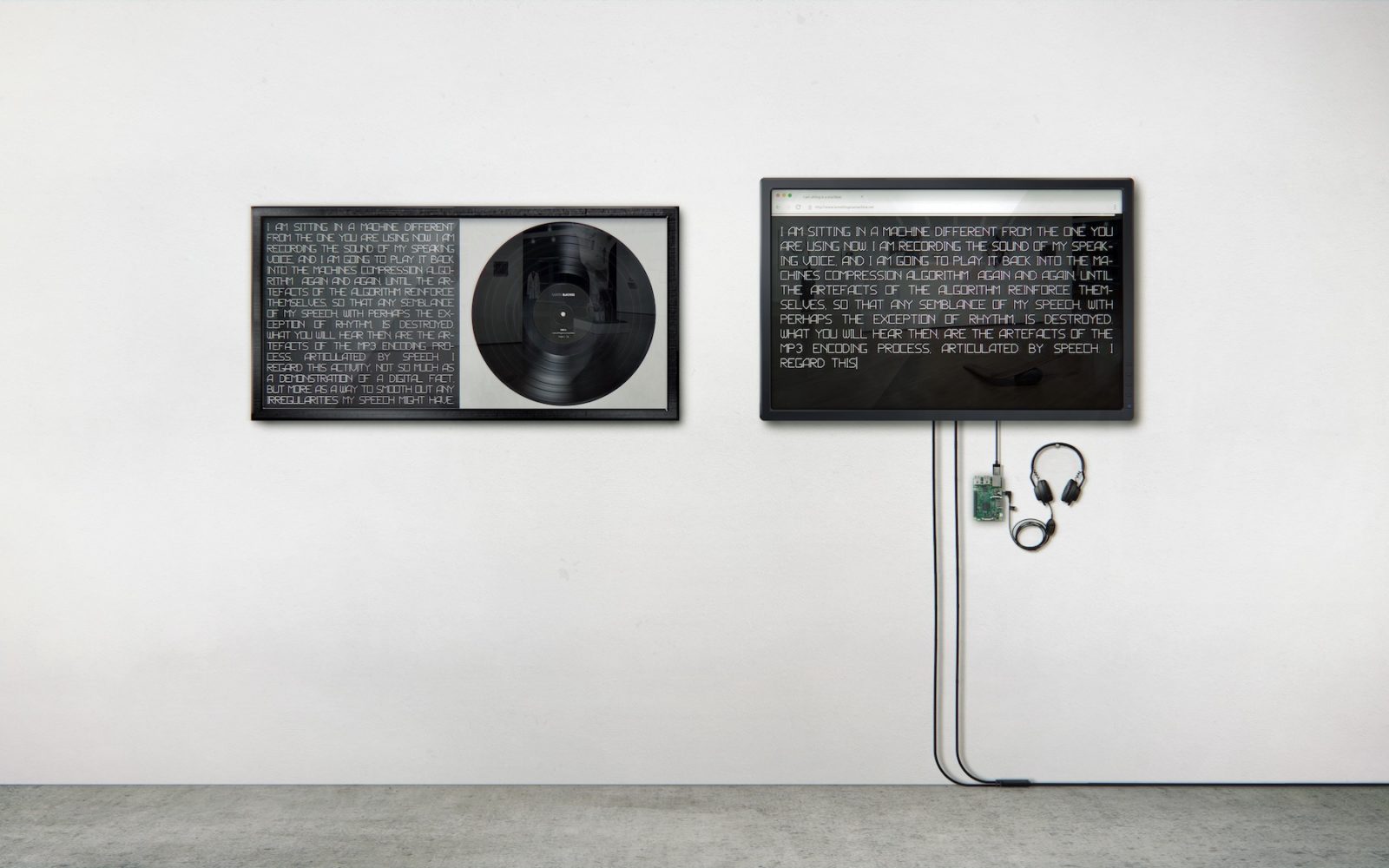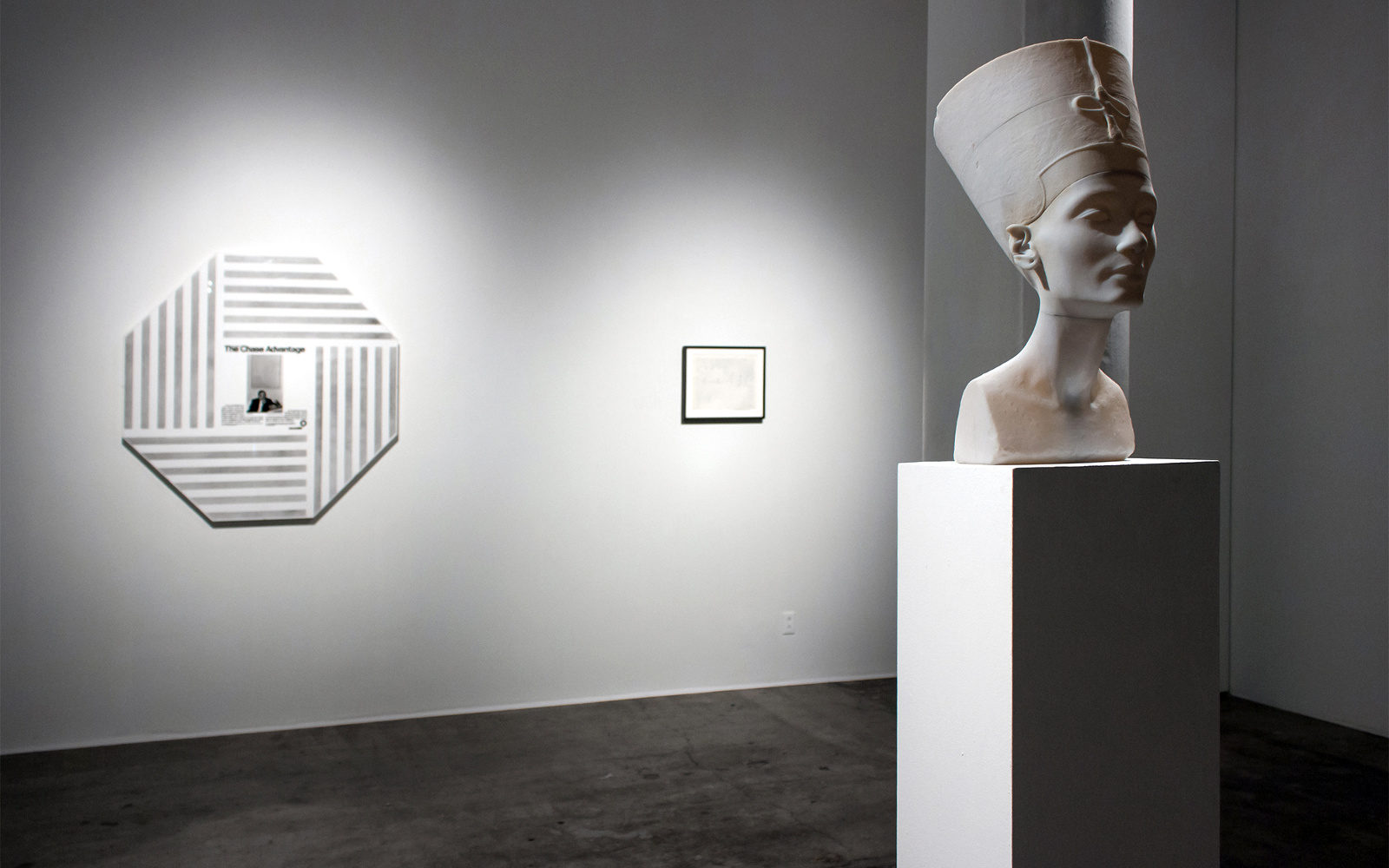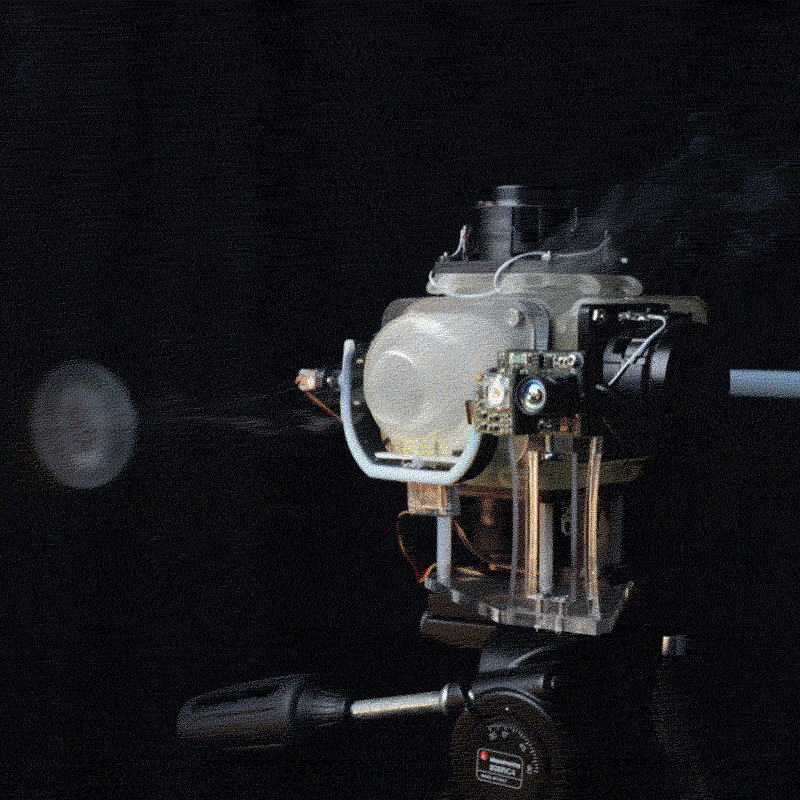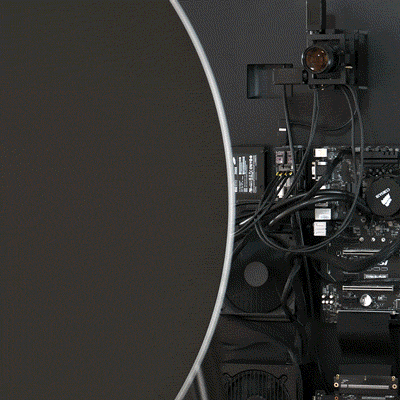/?s=iteration
Displaying search results
106 Results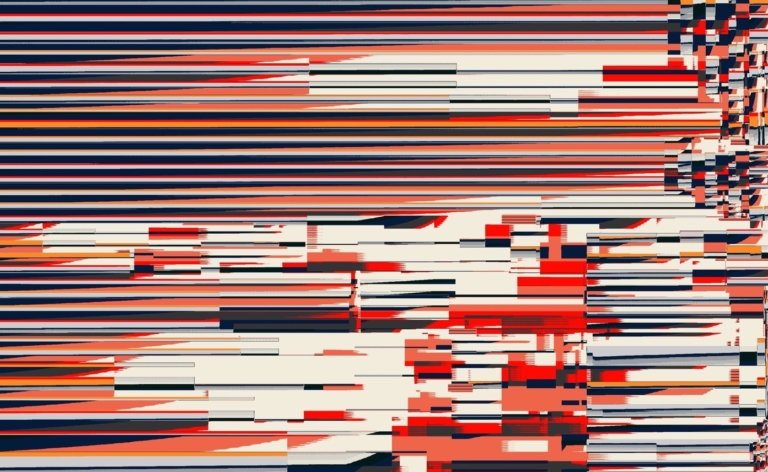
gr1dflow is a collection of artworks created through code, delving into the world of computational space. While the flowing cells and clusters showcase the real-time and dynamic nature of the medium, the colours and the initial configuration of the complex shapes are derived from blockchain specific metadata associated with the collection.
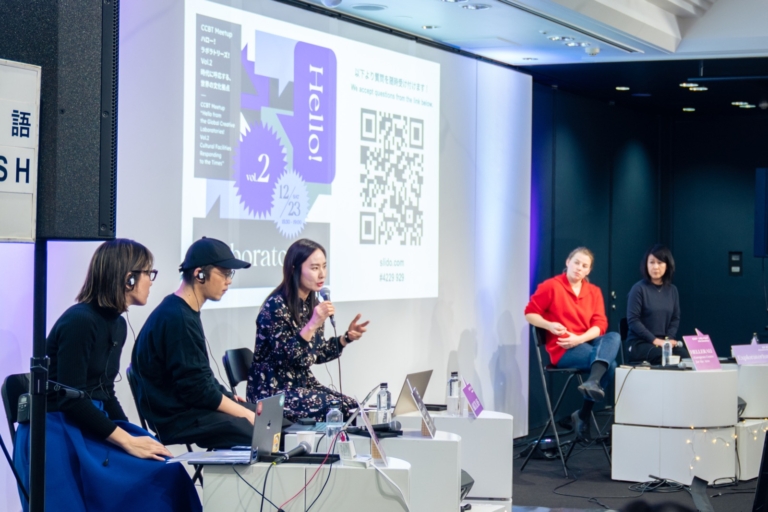
On December 23, 2023, “Hello from the Global Creative Laboratories! Vol. 2: Cultural Facilities Responding to the Times” was held at Civic Creative Base Tokyo (CCBT), a hub for exploring creativity through art, technology, and design.
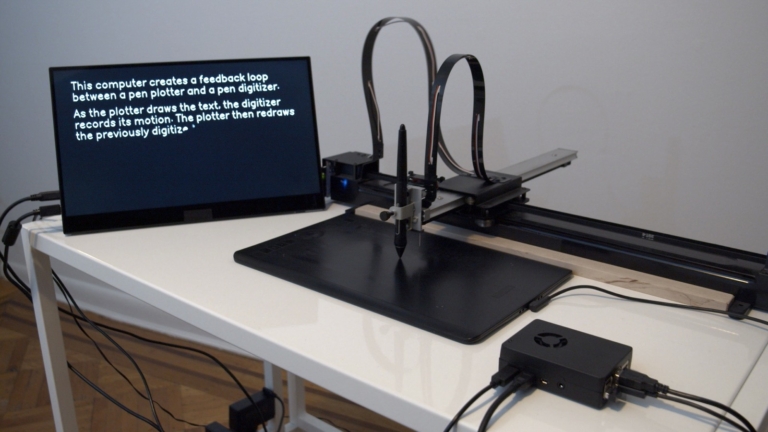
Repeater is a custom software that creates a feedback loop between a pen plotter and a pen digitizer. The process starts with the pen plotter tracing the description text. At the same time the software records and draws the text on the screen as captured by the pen digitizer.
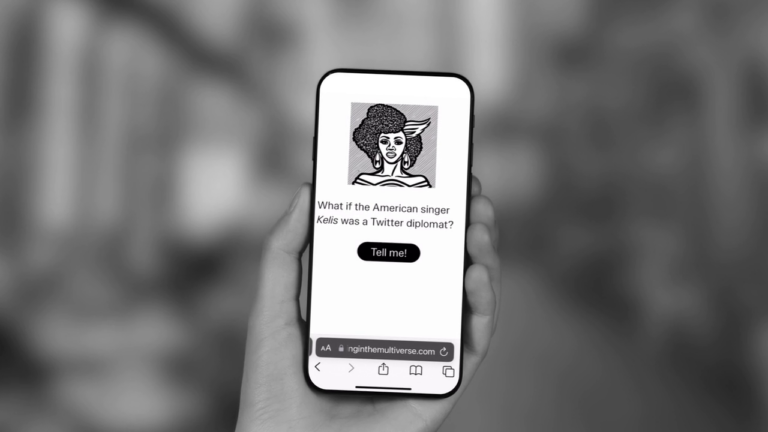
Created by Moniker, Trending in the Multiverse explores novel possibilities of content production. Awestruck by the latest iteration of AI systems that are both fascinating and worrying, the project asks us to reconsider our concepts of authorship, ownership, and creativity.
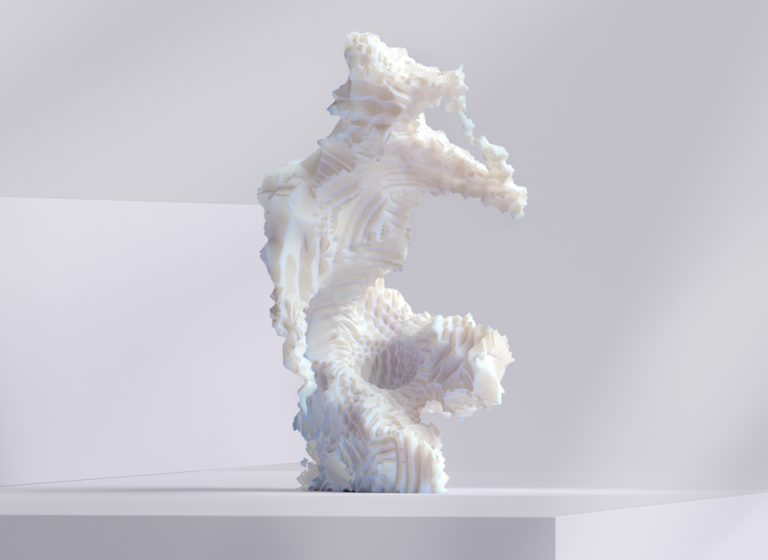
Imagined as a tool to provide assistance to a conventional approach to sculpting, here an AI model is developed to seek out strategies that provide a constant improvement to how a given form is achieved. By feeding it with different tools, rules and rewards through reinforcement learning, the team steer the process revealing unpredictable outcomes.
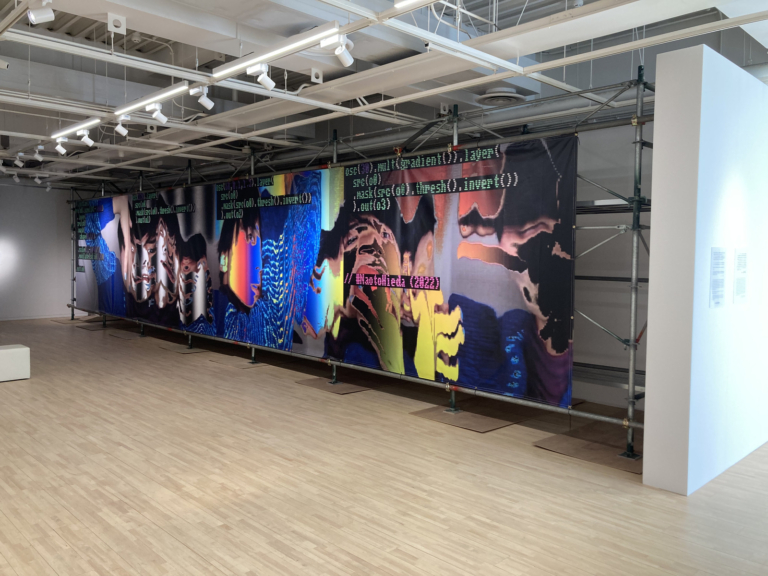
#NaotoHieda is an artwork around a computer program and a body. A screenshot of a performance using the artist’s body and a custom-made web editor for live-coding is printed as a large construction banner. Currently, it is on view at a group exhibition at Pola Museum Annex in Tokyo, Japan from February 11 to March 13, 2022.
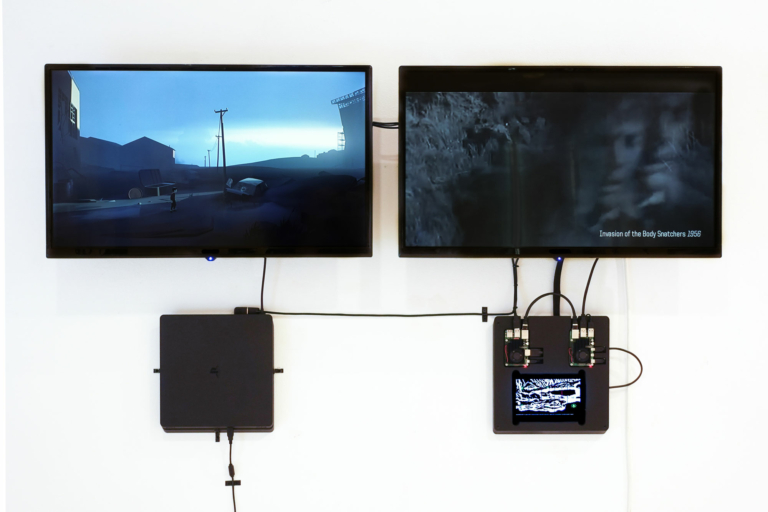
Created by Douglas Edric Stanley, Inside Inside is an interactive installation remixing video games and cinema. In between, a neural network creates associations from its artificial understanding of the two, generating a film in real-time from gameplay using images from the history of cinema.
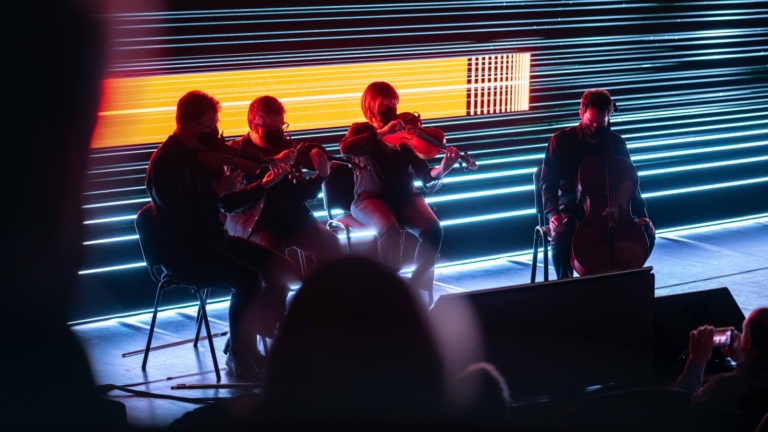
Created by Playmodes, ‘FORMS – String Quartet’ is a live multimedia performance for a string quartet, electronic music and panoramic visuals, in the field of visual sonification. The project originates from a real-time visual music score generator created by Playmodes, that is designed with a set of rules using graphic generation, driven by randomness and probability.
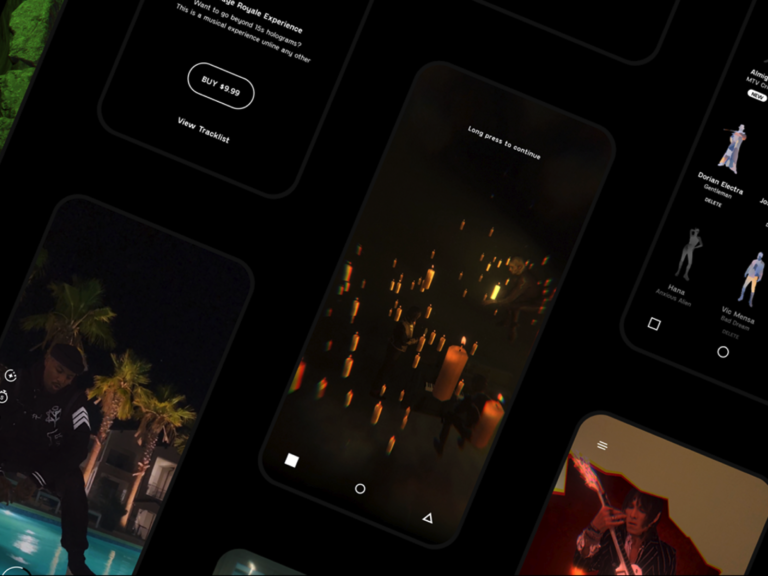
We made a bunch of new holograms exploring photorealistic virtual humans with fully 3D volumetric video performance capture — Including Lil Nas X and Palaye Royale We also expanded the capabilities of the camera with some new functionalities and filters to support creators with the first iteration of tools they might need We finally released our first Augmented Reality Experience…
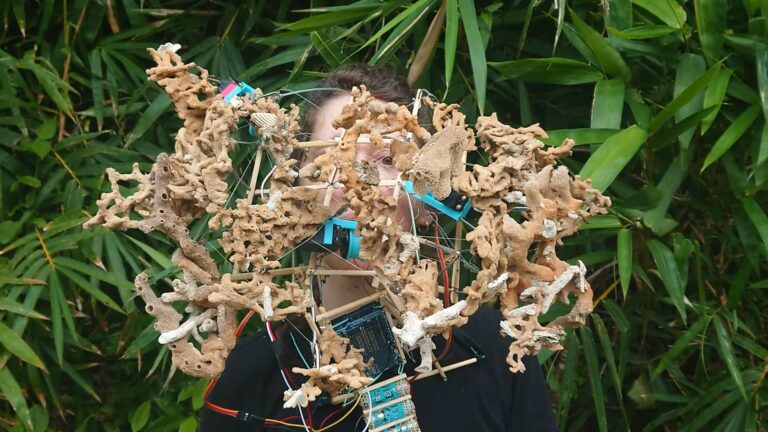
Created by Madeline Schwartzman, “Face Nature” is a series of experiments produced within the context of See Yourself X: Human Futures Expanded (SYX), a recent publication by Madeline that looks at human perception and the sensory apparatus and questions what will be the physical future of the head and the sensory apparatus in fifty years time.
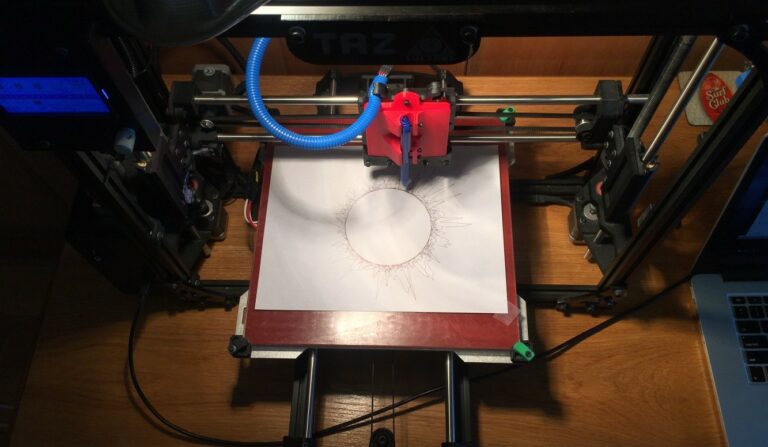
This is my audio responsive 2D drawing machine, made with goal of creating automated art through live interactivity between 3D printer and environment. IIt is powered by custom Processing code (Java based), live gCode production, and a Lulzbot TAZ 4 3D printer. The normal plastic extruder has been replaced by a printed pen holder. This…
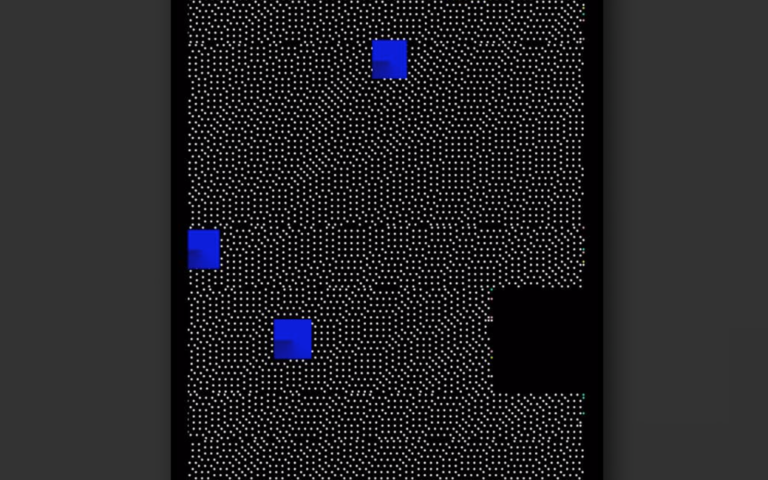
How do structures emerge in our model of a quantified, computational universe? From galaxies down to cells, atoms and strings. How does anything complicated get produced in nature? The artwork “Cellular Computation In Blue And Yellow” uses the cellular automata mechanism discovered by Stephen Wolfram in the 1980s found across physics, chemistry and biology to…
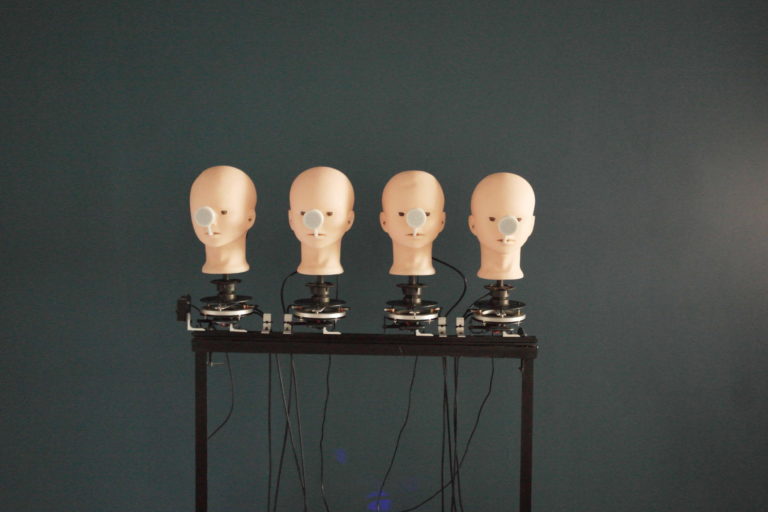
Created by Saurabh Datta, “ChineseWhispers” is an installation comprised of four head figures performing “Chinese Whispers” – a sequence of repetitions of a story, each one differing slightly from the original, so that the final telling bears only a scant resemblance to the original.
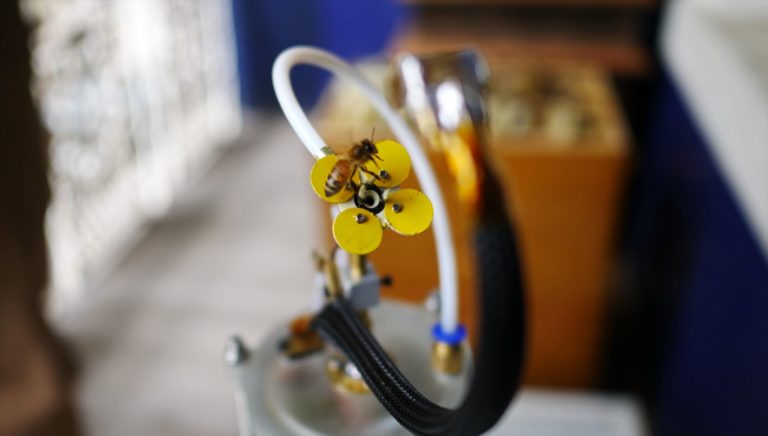
Created by Michael Candy, “Synthetic Pollenizer” is a conceptual intervention in real-world ecological systems using artificial flowers. Inspired by natural pollenizers, these robotic replicas artificially pollinate bees, integrating into the reproductive cycle of local flora; an initiative into a cybernetic ecology.
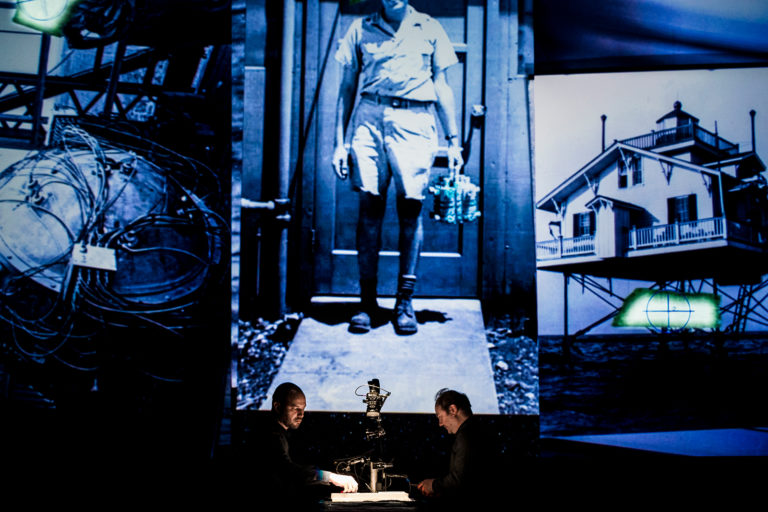
“Three Pieces with Titles” is the latest audiovisual performance by Montreal’s artificiel. In it Alexandre Burton and Julien Roy manipulate an eclectic collection of objects within the field of view of a computer vision system to generate real-time video and abstract sonic collage.

“Designing the Computational Image, Imagining Computational Design” is an exhibition that excavates the foundation of computer-aided design and manufacturing and weaves together several ‘origin stories’ for contemporary consideration. The show recently closed after a seven-week run at the Miller Gallery at Carnegie Mellon University in Pittsburgh, and CAN was fortunate enough to get a guided tour with curator Daniel Cardoso Llach as it was winding down.
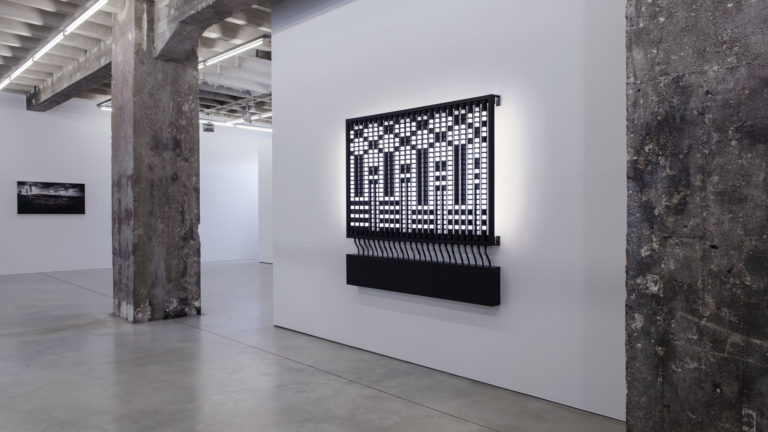
Created by Berlin based onformative, true/false is a kinetic sculpture comprised of arrays of circular black metal segments set in mechanical columns. Interlocking and rotating around fluorescent light tubes, the cylinders cover or expose the light to display an endless number of patterns.
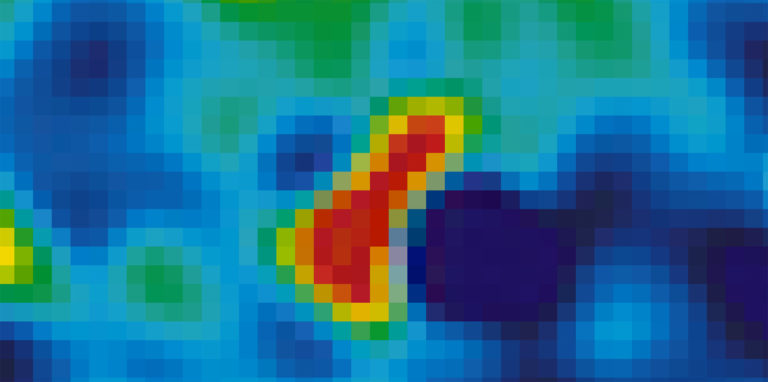
Dan Tapper is a British artist based in Toronto that combines his interest in code and celestial form and his recent research project “Turbulent Forms” visualizes and sonifies various cosmic phenomena. To mark the recent exhibition of this work (and related collaborations with several composers) we present this extended conversation with the artist about cosmology and data aesthetics.
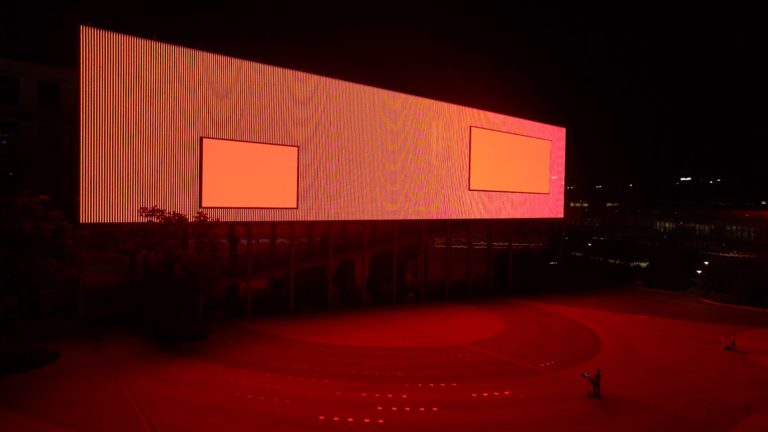
Created by the South Korean sound artists GRAYCODE and jiiiiin, #include red is a large-scale audiovisual installation and performance piece that explores ideas of synaesthesia (the relationship between what we hear and what we see) through the inherent frequencies within the visible spectrum and colour as a vocabulary.
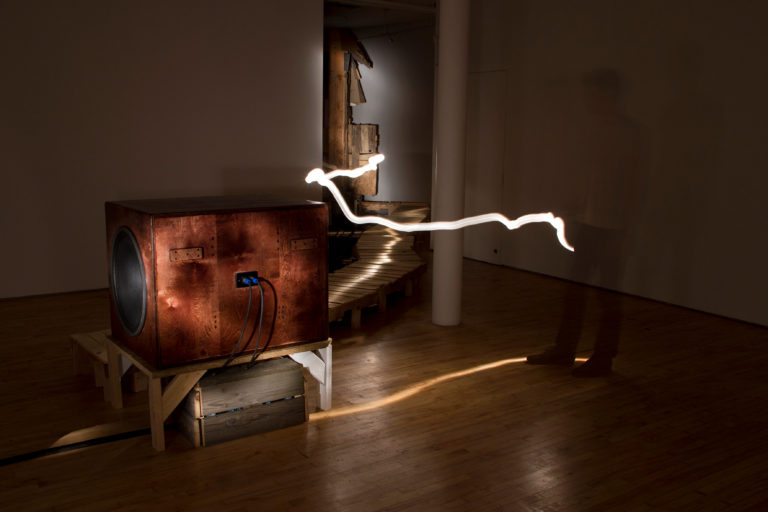
AUDINT is a European artist collective working across animation, installation, and publishing. Drawing on excerpts from an extended conversation with the group, we unpack their vision of the dystopian future-present and the nether zones that can be conjured through sound and vibration.
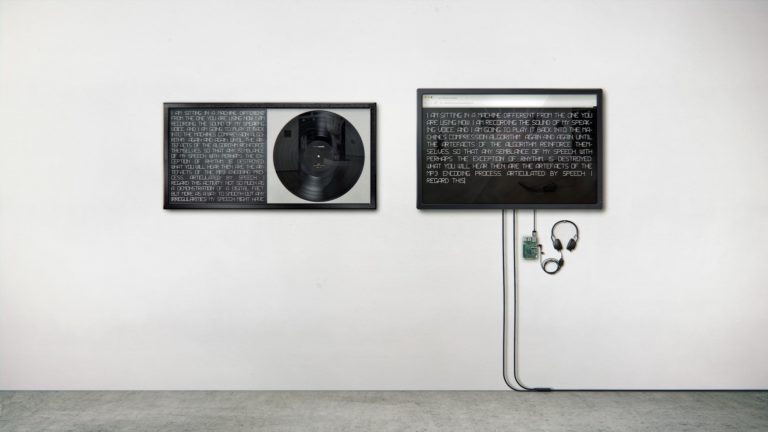
Created by Martin Backes, ‘I am sitting in a machine’ is a two part work algorithmic work consisting of a dubplate vinyl and a webpage containing 32 tracks selected from 3000 successive iterations of MP3 encoding.
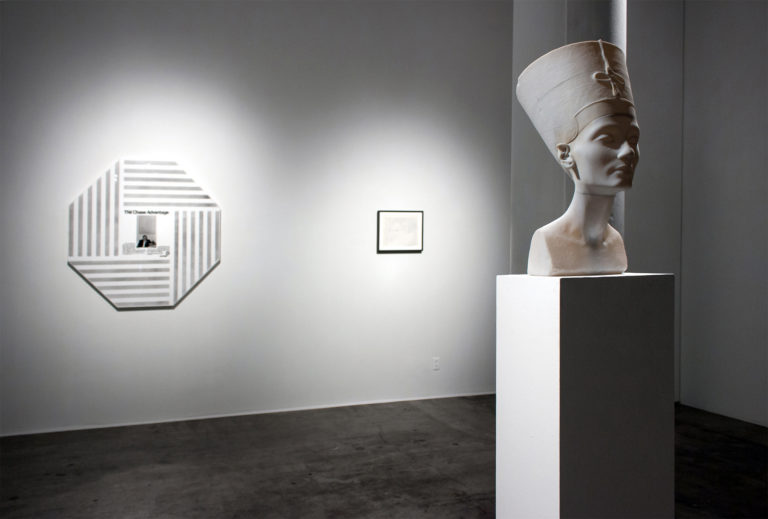
“Evidentiary Realism” is an exhibition that delves into the aesthetics of sites of inaccessibility, incarceration, and intrigue. CAN’s NYC correspondent Dylan Schenker ponders the Paolo Cirio-curated show, which emerges from the collaboration of NOME and the Fridman Gallery.


